Staying on the Edge – Reflections from Darwin
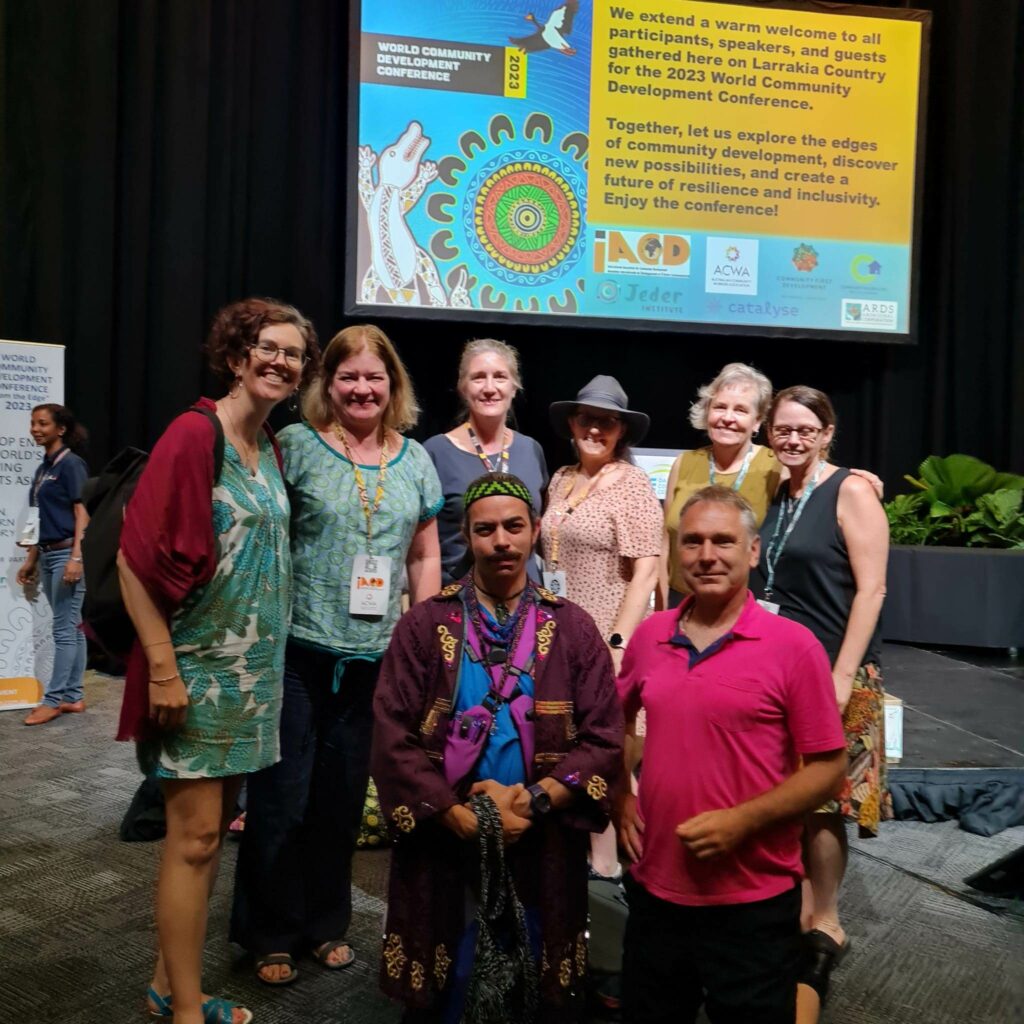
One of my favourite sayings has always been, “if you’re not living on the edge, you’re taking up too much space.”
I’ve loved being part of organisations like Waitakere City Council and Inspiring Communities who intentionally challenged the status quo – working relationally and creatively with others to determine what to do to next, rather than just doing what has traditionally been done.
So with 28 other fabulous Kiwis, I headed up to Darwin to the World Community Development Conference eager to think more about what the conference theme of “being on the edge”, and what community, culture and connection looks like from global perspectives.
I was humbled and reminded about what matters on day one, by one of our own keynote speakers Ani Pahuru-Huriwai from Wharekahika in Te Tai Rāwhiti. Persistence, connection to whenua and identity, trust and relationships, thinking intergenerationally, family, heart and hard work, activism and aroha. Take 25 minutes when you can to learn from Ani’s story.
The message that Ani and many other indigenous leaders shared over the following days focused on the work we all need to do in community development to better enable indigenous voice and leadership:
- Do your homework before you come talk to us – understand Te Tiriti and decolonise
- Form enduring relationships, not fleeting ones
- Act, just don’t extract
- Be useful – know what can you bring to the table
- Act with compassion and aroha – give of yourself to help Māori achieve… add to our heart, don’t give Māori a heart attack!!!
- Help us be the ones who lead and decide who, what, why, and how
- Look after indigenous intellectual property, take care of how you share it
- Listen to your community
When it came to conference conversations around culture and community, I was struck by how far Aotearoa has come in the last decade when it comes to valuing indigenous leadership and world views. While we’ve still got a long way to go, I do get a sense things have moved from the edge, to being much more mainstream.
In communities right across Aotearoa, I see genuine willingness and commitment to be better Te Tiriti partners, to learn more about our real history, to build authentic relationships, and address inequities that Māori have suffered for far too long. There is a much larger number of people, groups and organisations motivated by the opportunity to learn from, support and work respectfully with Māori, than the small but vocal minority who remain fearful and threatened by what they might lose in the process. As it is with community-led development, there is room for so many and/ands – it doesn’t have to be an either/or!
Another big conversation topic that I was drawn into at the Conference was around community development practice standards and professional qualifications. On this one, I felt myself moving back from the global mainstream to the edge! I actively bristled as others talked about professional qualifications being essential for all community workers – with a drive to professionalise both the approach and workforce. While I totally support the need for CLD training and skills development, and would LOVE to see a CLD qualification offered here in Aotearoa (sadly, IC has looked at doing this but the NZQA barriers entry are just too high!), in my mind CLD is the work of everyone, not just paid people called community workers.

If we see local people as ‘agents of change’, then setting an expectation that they need a formal qualification to do this work runs counter to validating their key role as experts of their place.
Which reminded me too, it’s time Inspiring Communities took another look at the CLD capability framework we developed back in 2018. While we purposefully separated out the different roles that local residents, paid community activators and connections, and enabling organisations play in community-led change, I think it’s probably time for a next iteration!
Written by Inspiring Communities CLD Coordination and Practice Lead, Megan Courtney
I Love Avondale: Kai Avondale
In this video we are privileged to share the incredible manaakitanga of one of I Love Avondale’s four key initiatives, Kai Avondale. This collective of community programmes; Feed the Streets, Free Guys and Food Together improve access to kai for those who need it and provide places for people to connect socially.
We celebrate the I Love Avondale approach, to foster connectivity, belonging and action, ‘showing and growing the good in our hood’. Ngā mihi nui ki a koe to the team and volunteers at I Love Avondale for sharing their story with us.
It takes a neighbourhood to find a cat
The interesting thing about social cohesion is that it often does not show up until we are in crisis situations. The strength of the social cohesion of a grouping of people is often not visible until it’s called upon for us to rally together. If we see social cohesion as people making the choice to connect to each other, then we can see how important that is for a sense of belonging and contribution. Social cohesion allows us to experience stress and still remain positive towards each other.
Recently my 20 year old cat went missing and alongside the normal door knocking, flyer drop route, I also went on social media. This involved posting on Facebook groups including neighbourhood groups, and ones specifically dedicated to lost animals. Lots of people came back to me letting me know they walked through that street, and some saying they had seen the cat in question. This made me feel like I was not alone. I knew there were eyes and ears out there looking for this cat.
12 days passed, and we started to accept that the cat may not be found and then bing – a Facebook message came through saying someone had found the cat. The cat was brought home and I announced to these very same groups that the cat had been found. Over 200 people liked and commented on this and it was a joint celebration for us all that the 20 year old much loved family cat had returned home.
For me this is an example of what it’s like when people feel positive towards each other, and support each other at an individual and neighbourhood level. While this largely played out on social media, with the floods in Tāmaki Makaurau Auckland, this played out in real life. People are prepared to put others first, to rally together, and in this time of stress or crisis, work for the betterment of all.
I guess that this is the key thing about Neighbours Aotearoa, where we are interested in generating what it takes for people to feel positive towards the other people in the immediate area where they are living, so that when it is called upon, social cohesion is present.
Neighbours Aotearoa has been closely following participatory cities and their idea of bridging social capital. For us, when we think about social capital, we think about social relationships, both within existing and emerging groups and individuals. For example, when the dog walking group of New Lynn, the residents doing swap crops and the people on your street come together, they become an effective, joined-up network. They might find your cat.
So how do we get to know our neighbours? What do we have in common and how do we form positive relationships? These are the questions we’re asking at Neighbours Aotearoa. Here’s your opportunity to explore these questions in your neighbourhood this March. Connect with us on our website www.neighboursaotearoa.nz to find out more.
BLOG WRITTEN BY CISSY ROCK, LEAD FACILITATOR AND DEVELOPER AT COMMUNITY THINK
Pictured left to right: Cissy Rock, Bronwyn Haines, Vanessa Cole and Harriet Paul
Cissy and her team at Community Think are versatile, sensitive and nimble in their approach, able to think outside the square and create practical solutions, by drawing on their diverse range of skills and resources. Community Think deliver a unified and effective approach to getting things done, in ways that are appropriate, relevant and uniquely tailored to each individual client or project.
Rhetoric versus Reality
“We tend to underestimate the capability and capacity and resourcefulness of our communities – and in fact providing them with the resources and the information to get on and do the right thing, can lead to enormous success.”
ASHLEY BLOOMFIELD, FINAL MEDIA CONFERENCE AS DIRECTOR-GENERAL OF HEALTH, 27 JULY 2022
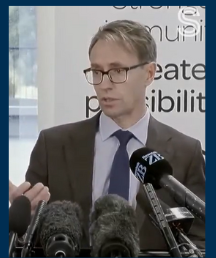
These are telling observations from a senior government official thrust into one the most challenging situations in the post war period. The Covid 19 pandemic contained a myriad of complex challenges, high levels of uncertainty and rapid change with massive and often inequitable impacts.
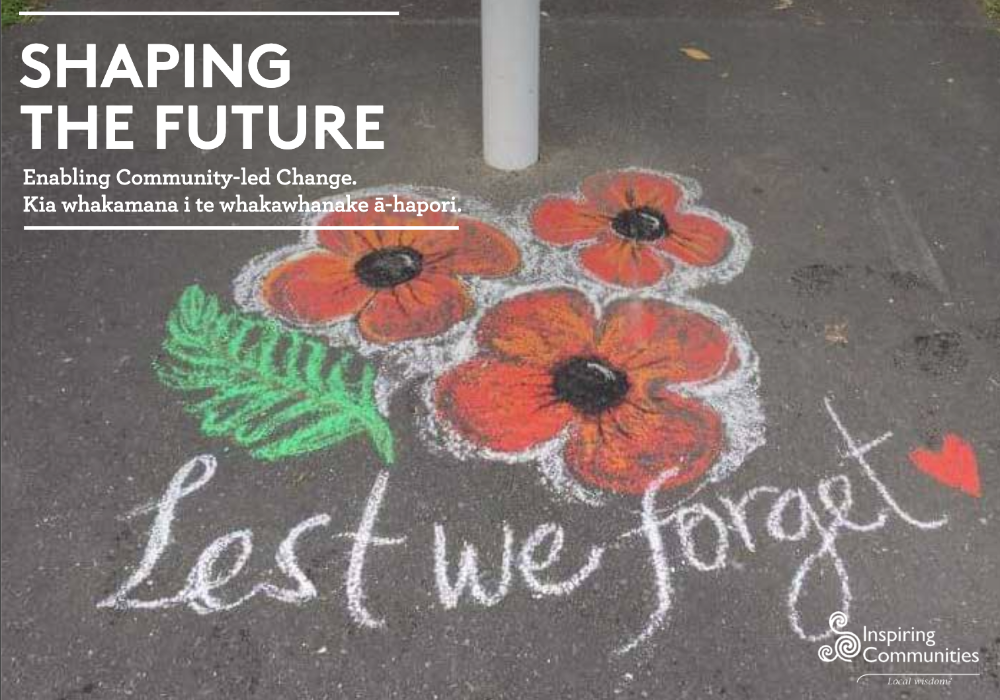
A ‘business as usual’ approach from Government was not going to be adequate. So, when it was required, people ran from their silos, made connections and focused on a shared purpose. Power was shared because it was the right necessary and effective thing to do. While the capacity of local communities to collaborate and self-organise was present before Covid, it came to the fore during the first national lockdown. This was well documented in Inspiring Communities Shaping the Future report, and of course that capacity remains.
The pandemic provided us with a taste of the scale of change we face with other complex issues such as the climate crisis. As Ashley Bloomfield learnt, we need to evolve government systems, so they better strengthen and support communities to respond and sustain a good and equitable quality of life. New Zealand’s stable democracy, growing Māori economy and contributions, and relatively small size provides an ideal platform to model new Government systems for other nations to learn from. Success requires new levels of collective effort facilitated by widening conversations beyond narrow party-political debates. The good news is that this shift is already happening. We all need to notice it, value it, and learn how to support its growth.
Here is one small example. Innovating Streets for People is a Waka Kotahi national initiative. In Cannons Creek Porirua, a community-led approach shaped its implementation.

It started with 15 local residents forming an “Engine Room”. They were supported with facilitation and engagement training and then helped organise and host forums to generate ideas from locals which were then worked through with Council engineers. The goal was achieved, 85% of the traffic going past the shops and nearby school now travels at less than 30km/h and the area is much safer for pedestrians and kids on bikes and scooters. The results went beyond safer more attractive streets. Capacity for local residents was strengthened, and social connections have been built that can now inform other issues the community is facing.
Makerita Makapelu from Te Hiko, who facilitated community engagement for the project says she once again observed that when you give the community the opportunity to lead, and you give them the right support, they can do it, and do it really well. Click here to read the Innovating Streets case study
As with all new approaches there were challenges to overcome, and people had to learn different ways of working. However, this small initiative is scalable. There are many more stories like this of how a national goal can achieve better outcomes when it enables local collaboration. Embedded in all these examples are critical insights that need to be highlighted and shared.
Our current government system knows about the important role of local communities. ’Community involvement’ is increasingly referred to in policy statements across many sectors. The paradox is that the system used to craft these policy documents and implement them is largely based on an old mindset of ‘how government works’. This results in cynicism as pro-community language in policies is not being matched by peoples’ experience. Eroding support for our democratic system therefore becomes a real risk. Any large-scale change will surface contradictions. It did in the Cannons Creek example, but fortunately they aren’t deal breakers. With competent coaches, and support drawn from across society, communities, organisations and the public sector, new pathways can be formed to enable new understandings of ‘being Government’ to emerge and take root.
There is no shortage of examples of how this can work – and we have seen many of these in action and review in 2022.
However, there are also examples where change is slow, in some cases harmful. There are spaces where more needs to be done to help us all solve other complex challenges which have spent too long mired in top-down mindsets and inflexible responses.
Inspiring Communities thinks it’s time to check community-led rhetoric with reality. We’re planning new research to identify and report on the public sector’s progress in enabling greater local community input. We want to explore collaborative leadership across policy domains, investment and implementation of more locally-led policy approaches. This will be a collective assessment involving a range of organisations who are independent of Government but have expertise in community-led development and social innovation. We’d love to hear from you if you have a view or would like to be part of this, please email Rachel Roberts – at rachel.roberts@inspiringcommunities.org
Blog written by David Hanna – Inspiring Communities CLD Influencing and Practice Lead & Rachel Roberts – Powerdigm Strategic Lead. November 2022
Tatau Pounamu Collective
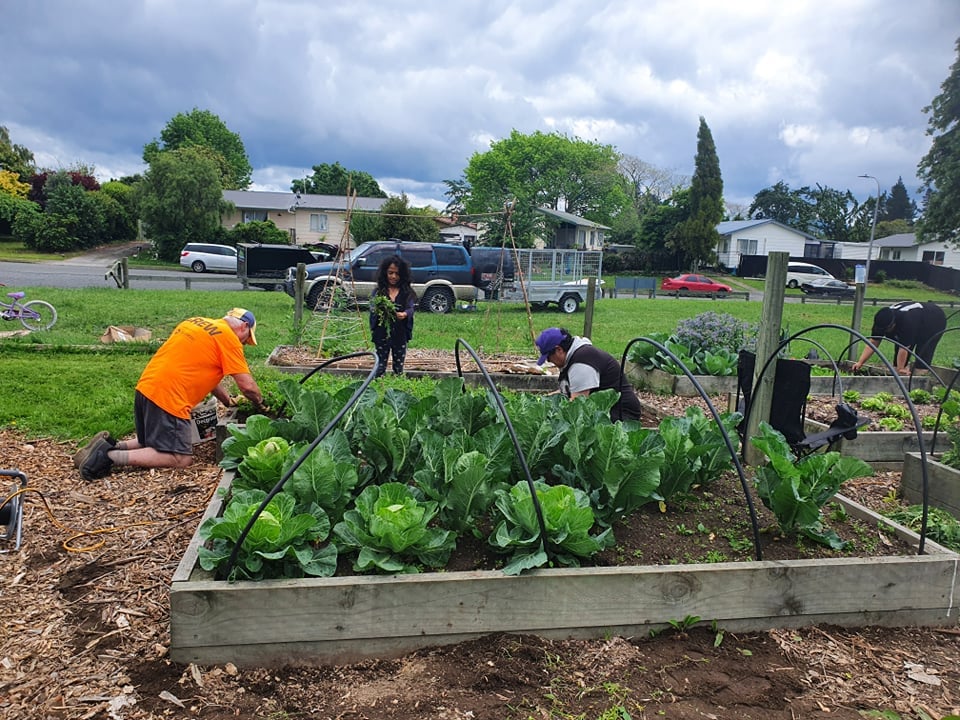
Tatau Pounamu is a community collective of stakeholders activating Taiao (environmental) and Hunga ao (health & wellbeing) initiatives within the Rotorua Eastside community. They hold a vision for Eastside Rotorua to be a safe place where every tamaiti (child) reaches their potential. The Tatau Pounamu Collective (TPC) was seeded out of the success of a community-led garden initiative and further catalysed through the Mokoia Community Association. Tatau Pounamu has been meeting as a collective fortnightly since 2012. In 2017 Tatau Pounamu became one of the inaugural 5 Community-led Development programme partners with Te Tari Taiwhenua (Department of Internal Affairs).
Evolving the collective vision
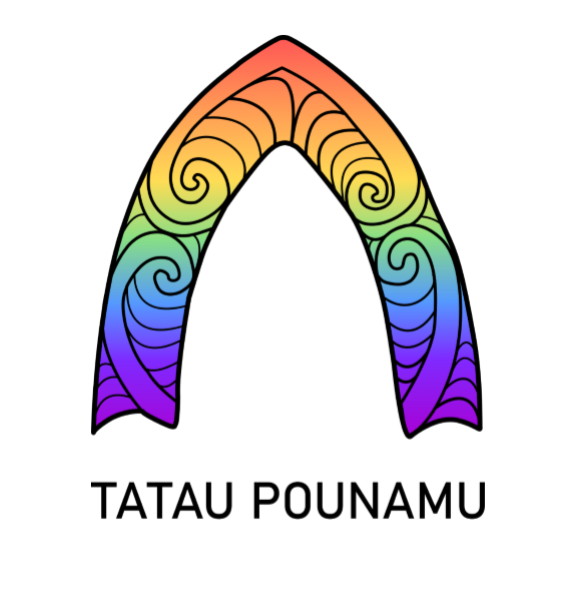
The whakaaro (plan) behind the Tatau Pounamu mahi (work) comes from a community-led approach that supports many people and organisations to work together towards a shared vision. The Tatau Pounamu Collective is made up of residents, hapū, community organisations as well as agencies and government departments who work collectively together to achieve this vision.
It is well worth having a good look around the Tatau Pounamu website, in particular this excellent, visualised expression of their approach – illustrating the pou (values) that guide the vision for the community, the double-hull waka that represents the Taiao and the Hunga Ao of the community. The hera (sails) represent the many ways the Tatau Pounamu approach is put into action by individuals and groups supporting each other and working together to create change.
The Collective has two paid workers, who are responsible for holding and sharing the Collective’s vision and mahi. They are a Pou Awhi – Communications, Administration and Support, and a Piripiri – Community Connector. We spoke with Sheree McKenzie, Piripiri and Molly Konui, who relieved as Pou Awhi for a time while Karamea Graham-Ratana was on leave from this role.
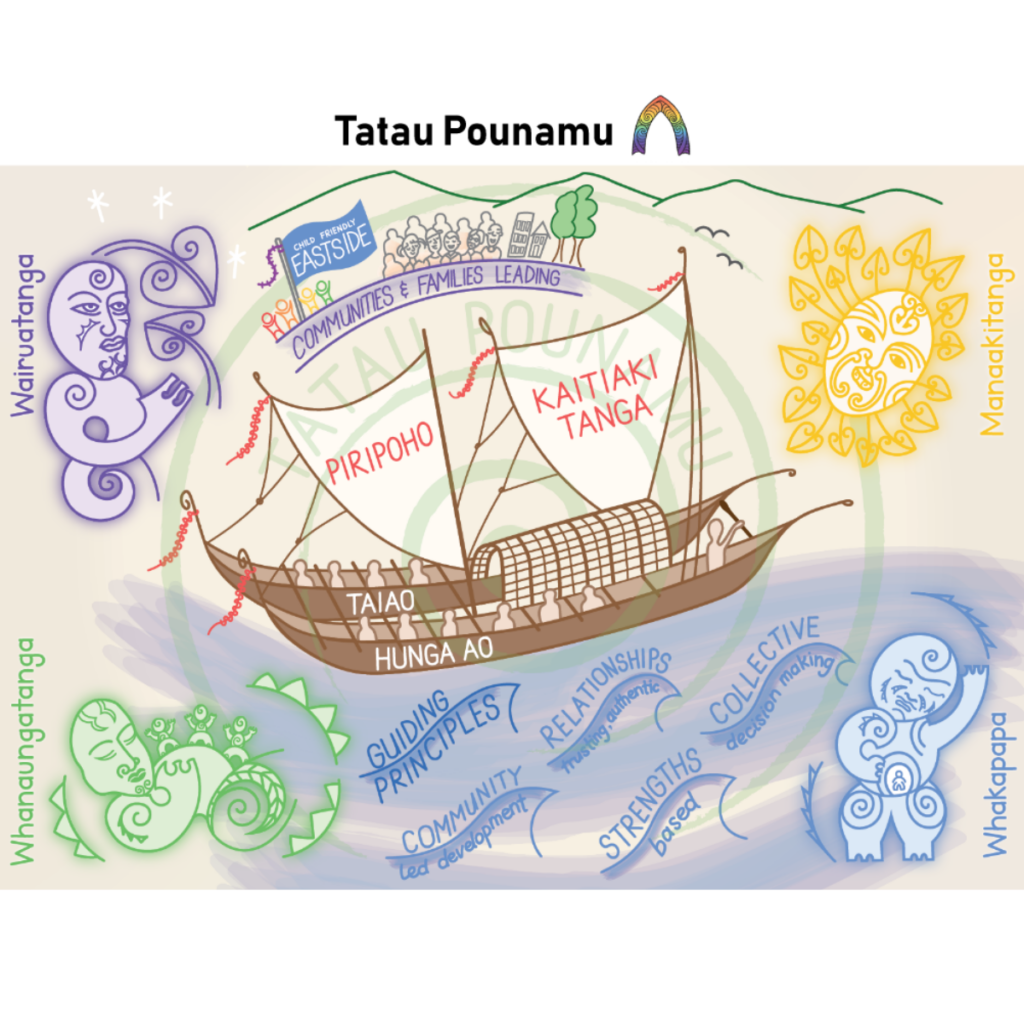
Eastside Wellness Plan
The collaborative community-led approach of the collective has enabled the establishment of the Eastside Wellness Plan. This plan was developed in consultation with the collective, local hāpu and Rotorua Lakes District Council. Significant input from residents, along with many local and national agencies such as Waka kotahi and Te Papa Atawhai (Department of Conservation) was incorporated into the plan. Conversations began in 2019, the plan was consulted on in 2020, and was adopted by Council in July 2021.
The plan is not only a pathway and framework for the aspirations and wellness of the community, but also specifically outlines how change will intersect with the community-led development in place, through a set of five key ‘moves’ that describe the intended outcomes and actions that will demonstrate how the plan can meet its objectives over time.
Eastside expects significant growth in the future, and with this wellness plan in place, the community has influence on how this development will occur. From land use, housing, health, education, environmental and recreational projects, the collective including mana whenua now have an agreement in place to work in partnership with Council and government departments from the early planning phases of all future developments in the Rawhiti (Eastside) rohe.
The shared collective vision is for Eastside Rotorua to be a safe place where every tamaiti (child) reaches their potential – meaning considerable thought, consultation and collective discussion has gone into identifying wellbeing outcomes for the tamariki in this community. Tatau Pounamu has a strong relationship with the Eastside schools and Early Childhood centres enabling the voice of local tamariki and rangatahi to be heard. The plan describes the intersection of many agencies, organisations and people and how they can work collectively around keeping tamariki and rangatahi front of mind when making changes in the community.
A place for tamariki and whānau to connect and thrive
The redevelopment of Puketāwhero park is an example of a community-led response to a playground that wasn’t meeting the needs of the community.
It began with a survey of tamariki and rangatahi on what they wanted. They took ownership and pride in it, as do their whānau
Sheree McKenzie
Feedback from local tamariki and rangatahi through surveys and workshops helped to inform the design and the development of the playground. The community consultation led to the Rotorua East Lions Club becoming an active participant of the collective and contributing 1000 volunteer hours to build the stage, with support from other members of the collective and the community.
The park is now a popular venue for whānau fun and community hauora days.
It turned an area of undesirable behaviour into an intergenerational open space that is used every day, not just by local whānau, but also whānau who drive across town to enjoy the park
Sheree McKenzie
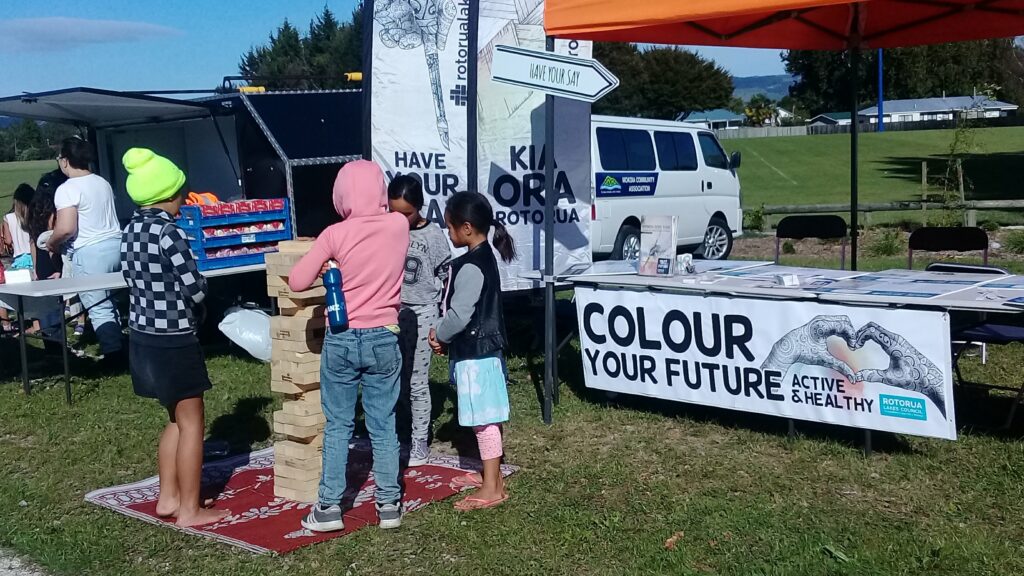
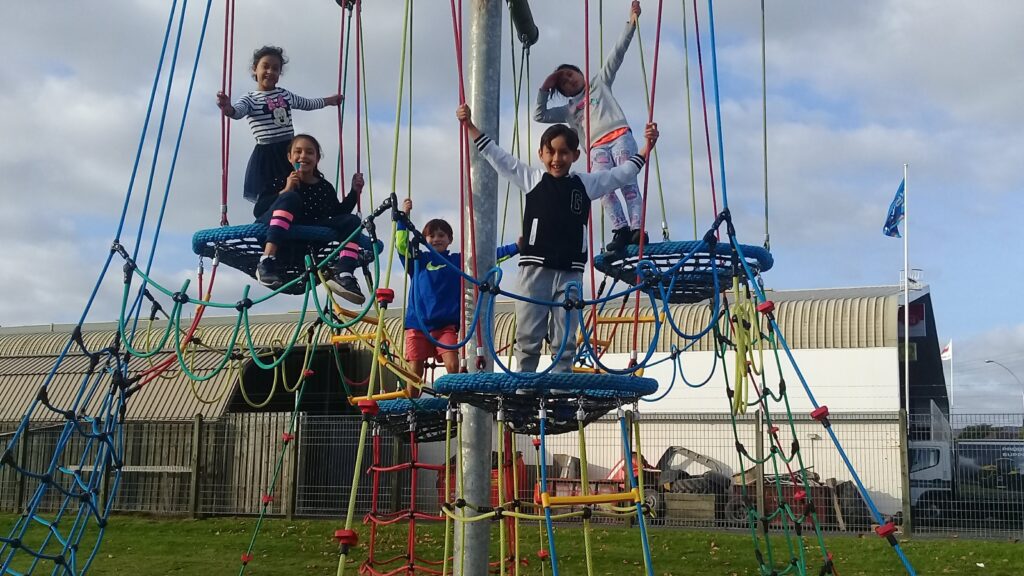
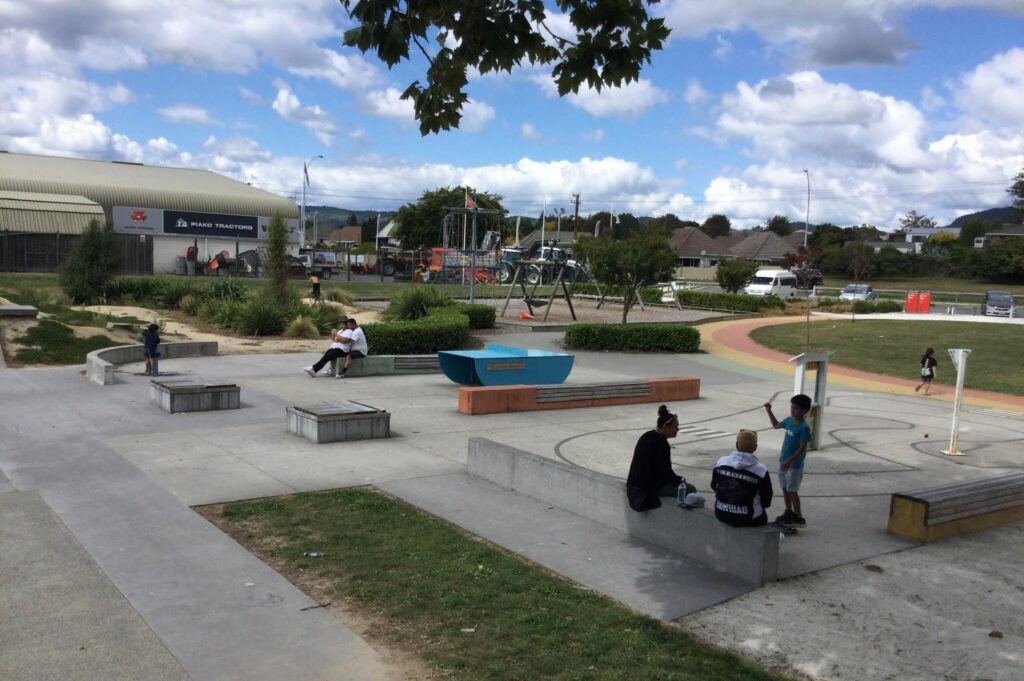
Community-led Development becomes agile online
Oftentimes, community in place is very much that – people, together, in a place. Molly and Sheree say that inevitably covid frustrations and limitations challenged the way the Collective had been operating. The Collective learned to be quickly adaptive and responsive to the changing needs of the community.
Piripoho Service
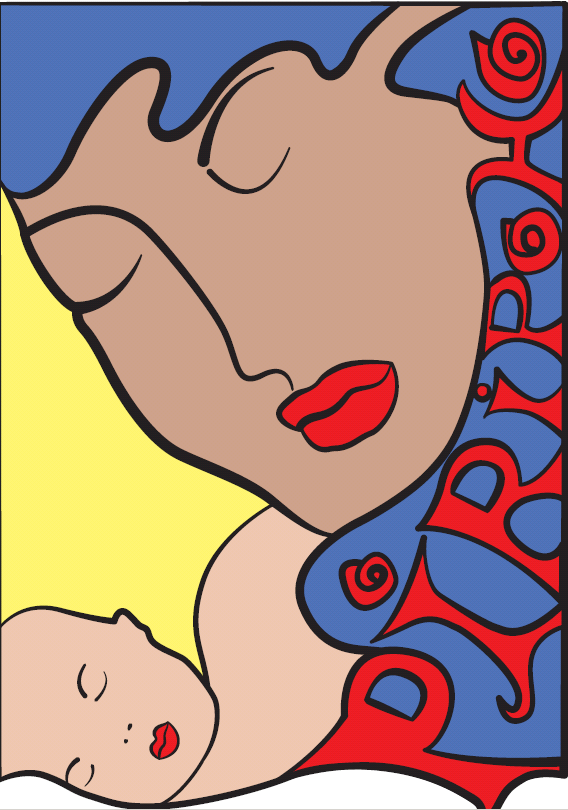
Piripoho Service is a key part of the Tatau Pounamu approach providing a community-based health and social service assisting whānau. The service has become adept at interacting online, via its Facebook page to meet the needs of whānau, particularly during the Covid-19 pandemic.
The Piripoho team, and their use of social media is our biggest connection in the community. Whanau can – and do, access the service by direct message and the 0800 PIRIPOHO number. The messaging on the posts is also really positive and pro-active – both on health needs and social needs
Molly Konui
The service has a community nurse and a whānau navigator who work directly with whānau to support the realisation of their vision: for every child aged 0 to 18 years and whānau, living Eastside of Rotorua, to be safe and empowered to reach their full potential.
During Covid-19 lockdown periods, the service focused on giving support that was agile and coordinated. After meeting essential basic needs for whānau, the Piripoho team identified the need for activity packs for tamariki. TPC responded by sourcing funds and suitable activities for the packs, These were then delivered to homes by the Piripoho team and Police Family Harm Intervention Team. This is an inspiring example of CLD strategies enabling tangible, practical actions and solutions that genuinely meet the specific needs of the people of Eastside. Read more about this child-enriching initiative here.
#LOVEEASTSIDE Social media campaign
In March of 2022, the collective decided to undertake an online campaign to activate engagement with the community. Through social media, residents were asked to share why they love Eastside and enter a competition for prizes.
Molly Konui
There were multiple drivers; engaging with our community which we haven’t been able to do due to Covid limitations, starting new connections, creating a sense of positivity, and focusing on what we love in our local areas. Our key target audience was our tamariki and rangatahi Eastside
The response and aroha for the Eastside was overwhelmingly positive and heartfelt, and really sums up the love and pride that the community have for this rohe (area).
Learn more about #LOVEEASTSIDE campaign here.
Collectively Nurturing our Future – Looking ahead
Taiao Kaitiakitanga activities are happening across the entire Eastside rohe (area). These are driven by mana whenua and the Rotorua East Kāhui Ako (made up of all local schools & Early Childhood centres). This includes biosecurity on Mokoia Island to ensure that it remains predator-free and a sanctuary for native birds. Looking into the near future, Tatau Pounamu is assisting neighbourhoods to have a third round of Eastside spring clean-up days to remove in-organic rubbish and provide education around waste minimisation and management.
This is just a sample of some of the many projects and activities undertaken by Tatau Pounamu. These kaupapa (activities) have shown what can be achieved by working in community-led partnerships and have firmly established community-led principles for the future growth and wellbeing of the Eastside of Rotorua where every tamaiti (child) reaches their potential.
Field Catalyst Thinking
I love it when someone else provides language and framing that brings to life what you’re seeing, thinking and doing too.
Earlier this year, I was struck by the Tamarack Institute’s paper on their role as a Field Catalyst and how they’ve accelerated social change in Canada. Field catalysts bring together the best of ‘bottom up and top down’ approaches and contributions to help strengthen social change on a national scale. Both local and national levels need to work hand in hand if community transformation potential is to be realised and sustained.
Tamarack’s report and accompanying webinar explores the many different kinds of roles intermediary organisations like Tamarack and Inspiring Communities (and many others!) are playing to enable place-based social change. Internationally, the important role of field catalysts is gaining attention, with key roles and tasks including:
• Bringing profile, language and legitimacy to an approach or issue
• Documenting, harvesting and sharing emerging learning, effective practice and practice-based evidence and research
• Making connections and strengthening relationships at multiple levels
• Building capability of change makers at multiple levels
• Influencing system changes (eg. funding and policy approaches) to make it easier for local level collaboration and innovation to succeed
I would argue this key national level social change infrastructure is largely unrecognised, undervalued and certainly under-invested in here in Aotearoa. We also need to talk about who or what kind of organisations are best placed to fulfil these roles and functions.
I suspect many government agencies would argue that they are well placed to be effective field catalysts and do this role now. I would respectfully disagree. A key part of the field catalyst role is navigating the ‘spaces in between’ different levels and stakeholders. It demands skilful looking and listening through multiple lenses to help make sense of what’s emerging and what’s needed to strengthen collaborative change processes underway or required next. Building this capacity outside of government or funder systems is imperative.
Aotearoa has one of most centralised forms of government in the OECD. The pandemic has demonstrated how difficult it is for central systems to share power and resource in ways that truly sustains and enables collaborative locally-led change. For many, working with government remains inherently difficult and slow, with vested interest in retaining the status quo significant – especially when new ways get challenging.
That said, calls for greater investment in community-led responses to some of our most pressing issues – family violence, housing, biodiversity, child poverty and climate change – continue to grow. This is the opportunity then. Rather than just funding individual community-led initiatives across the motu, we need to make sure that aligned resourcing for sector field catalysts is also part of the innovation investment mix.
This way, we can enable and scale greater impact for all our communities.
Note: Tamarack’s Field Catalyst paper is part of a Stanford Social Innovation Review series celebrating and sharing learning from 10 years of Collective Impact. If you’re working in collaborative contexts, it’s worth a look!
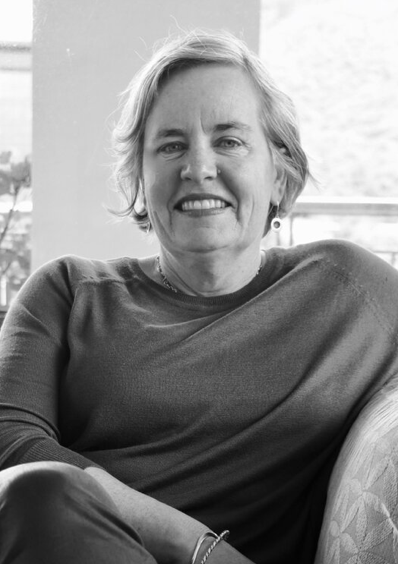
Megan Courtney, CLD Coordination and Practice Lead at Inspiring Communities
How Communities Awaken
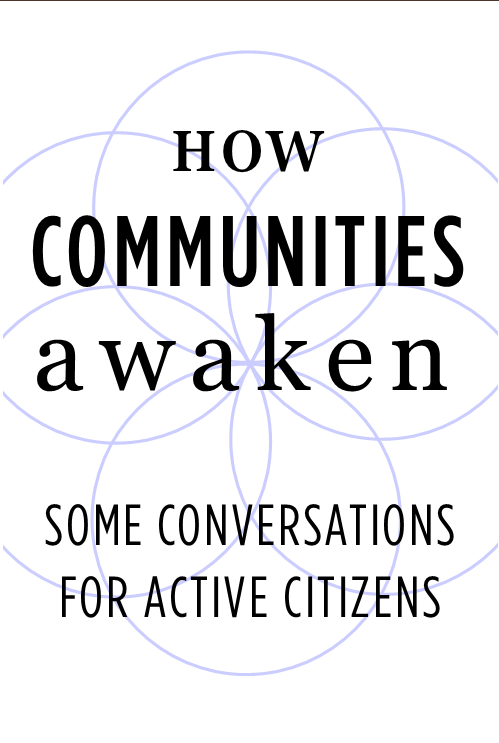
These essays delve into key community conversations from both the personal and communal perspective. The chapters break down the necessary ingredients for Active Citizenship, framing an understanding of our world where we as citizens can identify the tools, resources and inner drive to make the change we want to see.
Have a look at this diagram that helps us to visualise how these conversations sit together.
vivian’s essays were core resources in the Taranaki Active Citizenship masterclass process. Below you will find our conversations around each chapter and some accompanying videos from Tu Tama Wahine. Read our story, Fostering Active Citizenship – Learning from Taranaki to find out more.
Diving deeper – reflections from a community-led lens

Community
If you spend a little time observing birds in our landscape, you will undoubtedly notice the complexity and beauty of the feather. Pick up a discarded duck feather at the local gardens, you’ll note its fragility, those fluffy little soft baby hairs, but also those iridescent, waterproof ones that automatically smooth together to form a strong barrier against the elements.
“Mā te huruhuru ka rere te manu – without feathers, the bird cannot fly.”
vivian draws from a lifetime in community – from activism, social entrepreneurship, disruption, and service, to identify the core elements of conversation in our communities. Looking at the speed of change across our social and economic lives, community is identified as messy and contradictory, complex, growing, living, active and unique to place. This conversation challenges us to consider what we have to offer, where we come from and where opportunity lies.
Tess Trotter, IC Communications.
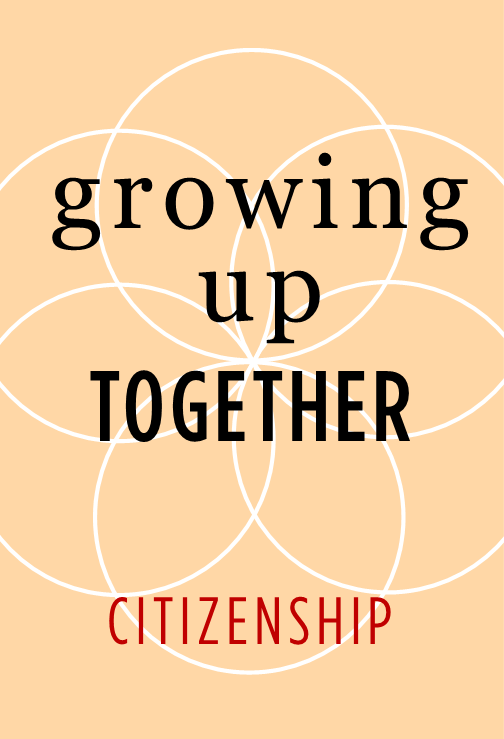
Citizenship
“Citizenship is that part of ourselves that we step into when we choose to serve the things that are beyond ourselves”.
Community-led development (CLD) reclaims the idea of active citizenship as a whole spectrum of community activity that includes those leading out front, through to the smallest steps we might take in our own household, neighbourhood or wider whānau to make our lives and the world a better place.
Citizenship matters and requires our urgent attention. In this chapter, vivian reminds us of the work we need to do to collectively rebuild and nurture our shared sense of belonging, contribution, committed action as citizens. At the heart of both citizenship and CLD is relationship, with conversations the key first step. But not just any conversations. Honest, open and intentional conversations that welcome diverse perspectives and challenge us to unpack what really holds us back – injustice, colonisation, racism, consumerism to name but a few. It’s the work we must do on our own and together. Time to get started!
Megan Courtney, IC
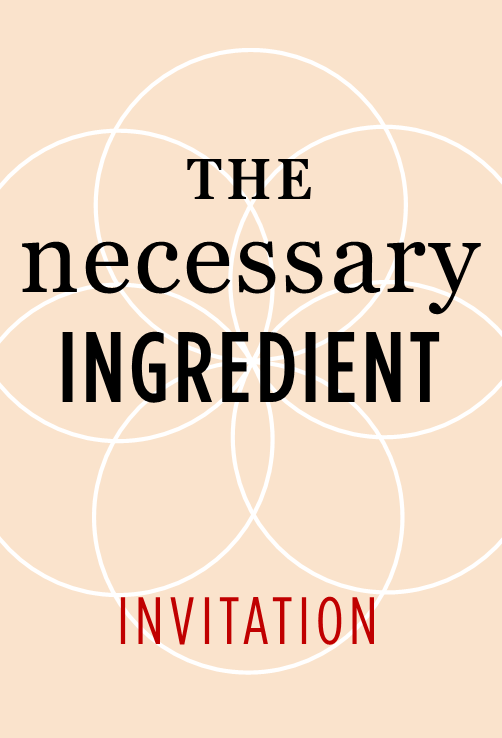
Invitation
“How valuable do you expect this experience to be?“
The message about ‘getting the invitation right’ really struck me as central to CLD practice. We invite people to be active citizens, engaging everyone’s strengths, growing shared local visions. The invitation feels like a potluck dinner compared to being a consumer at a café: everyone brings their gifts, there’s curiosity about what feast we might create collectively, relationships grow and often stretch us into shaping bold visions and bringing them into reality
Margy-Jean Malcolm IC
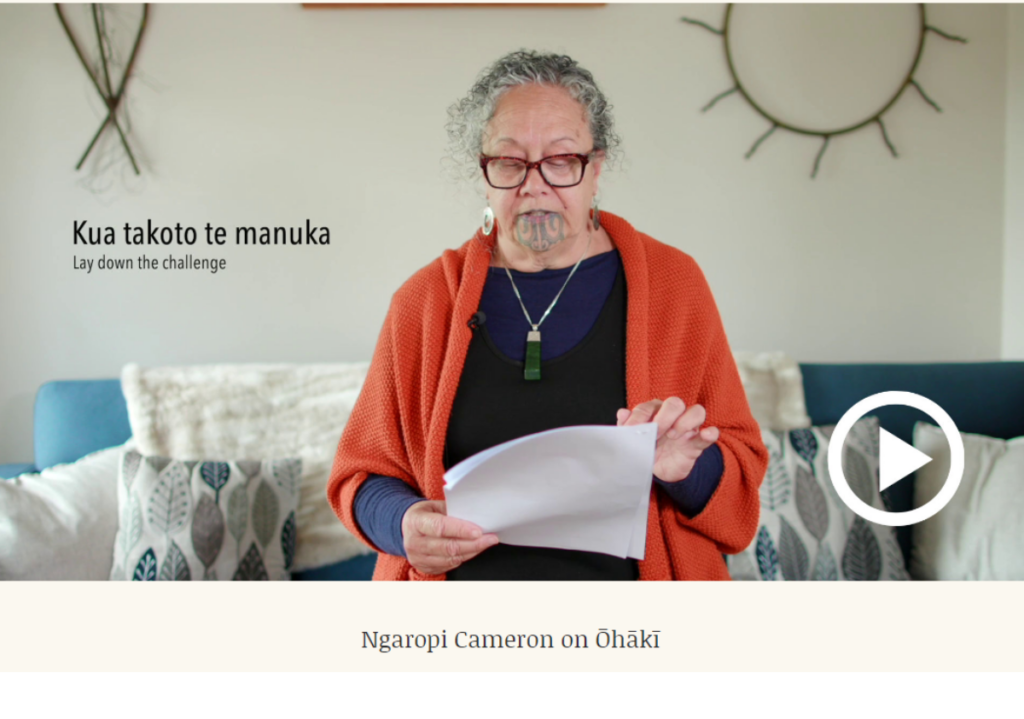
Stretching the Invitation Conversation
Presented by Ngaropi Cameron, Director, Tū Tama Wāhine o Taranaki
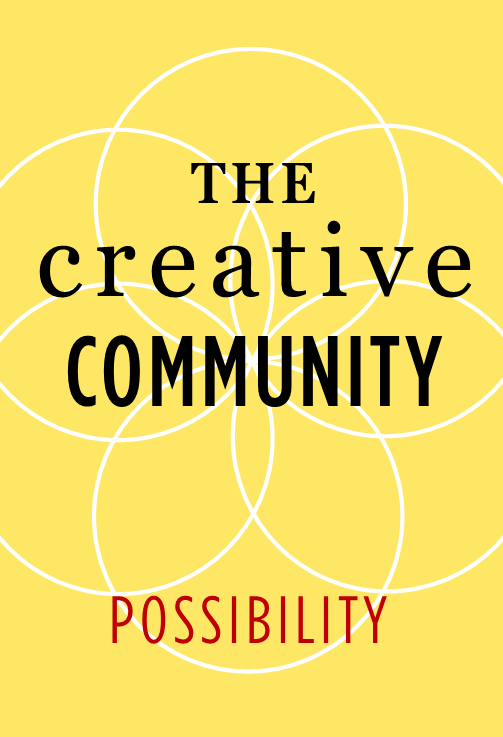
Possibility
“The fact of this is often taken for granted: human beings are community-making creatures.“
I loved the insight in this chapter about cultivating an imaginative mind to stretch our sense of what is possible. A CLD mindset focuses on strengths, assets, possibilities as the lifeblood from which healing and transformation happen. Fun, playful, creative dimensions of community-building are so important in lifting us beyond the weight of problems, despair or powerlessness. Together we find our courage to imagine a better future, our confidence to be creative, innovate, and learn by experimenting.
Margy-Jean Malcolm, IC
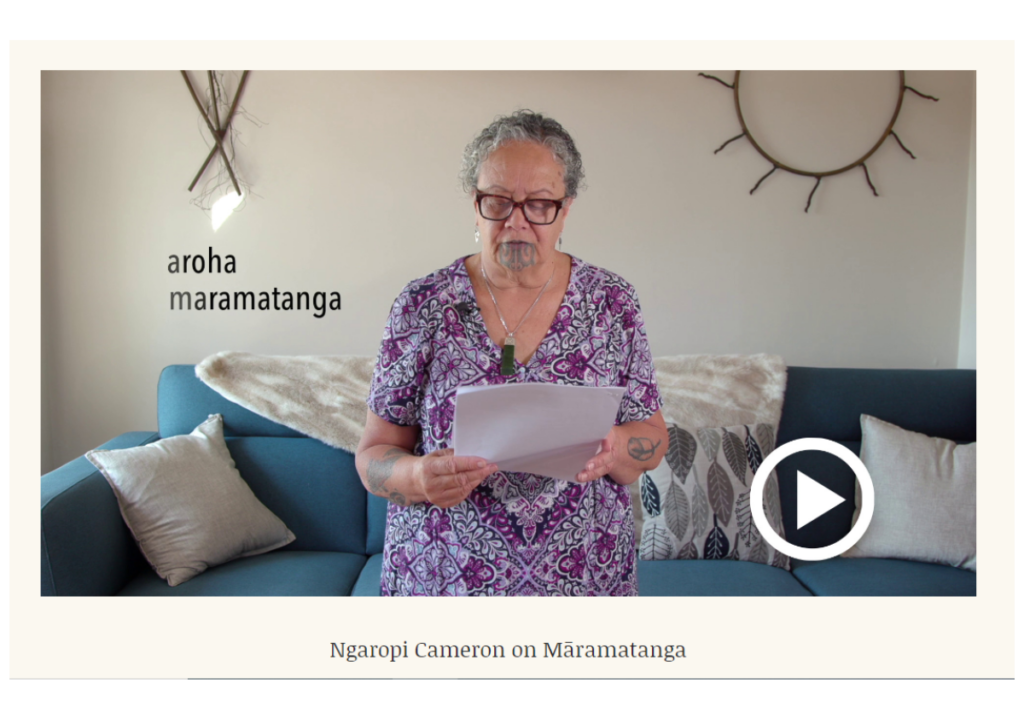
Ngaropi Cameron on Māramatanga
Ngaropi Cameron, Director, Tū Tama Wāhine o Taranaki
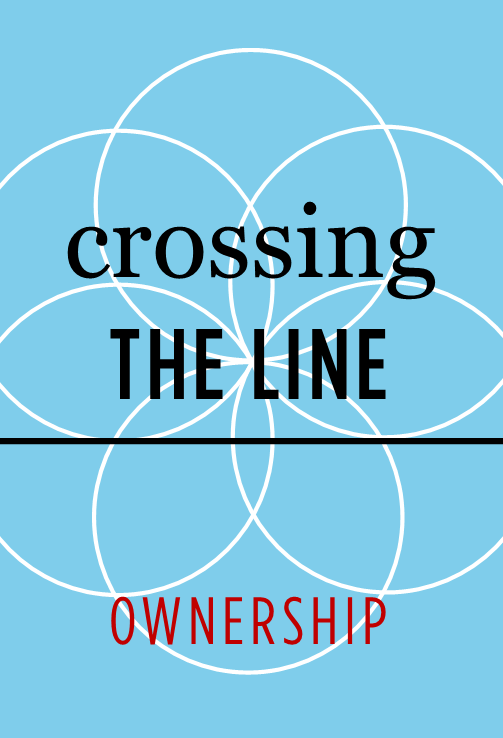
Ownership
“WE’VE GOT SOME challenging things to talk about. And it’s not all going to be positivity and possibility.“
The ownership conversation signals some challenging issues in CLD – it’s not all positivity and possibility. Power, privilege, inter-generational trauma, consumerism and colonisation are both external forces and internal narratives that we need to decolonise to support our sense of agency to make change. It’s an important nudge to notice when we lapse into “them and us” thinking, blame, excuses, denial – and a challenge to take responsibility to “cross the line”, and own our part in co-creating the futures we want.
Margy-Jean Malcolm, IC
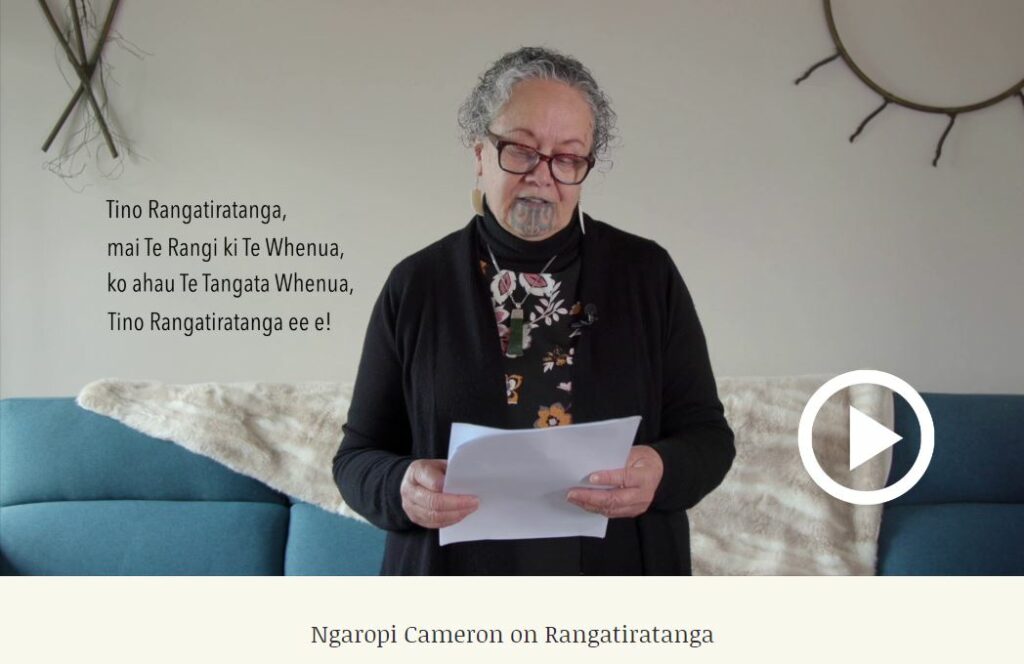
Ngaropi Cameron on Rangatiratanga
Ngaropi Cameron, Director, Tū Tama Wāhine o Taranaki
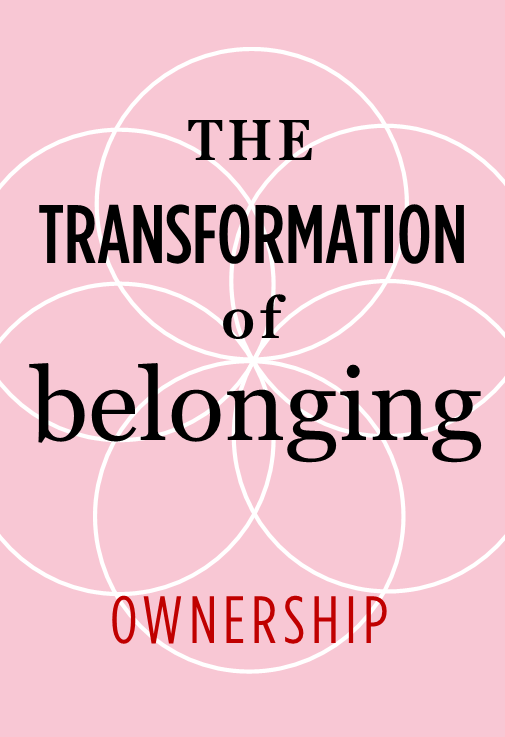
Ownership
The Transformation Of Belonging
“For me, the Ownership Conversation has been a life-long dialogue that has challenged and transformed my understanding of the nature of belonging.“
What’s our relationship with place, land, property? What if ownership was not about possession, but rather a deep sense of belonging and responsibility as ongoing stewards of the places we are connected to? I enjoyed the rich stories of kaitiakitanga of people, planet and place in action in this chapter, which remind us that CLD is about being strong kaitiaki of the past, present and future potential of our communities as places to live, work and play.
Margy-Jean Malcolm, IC
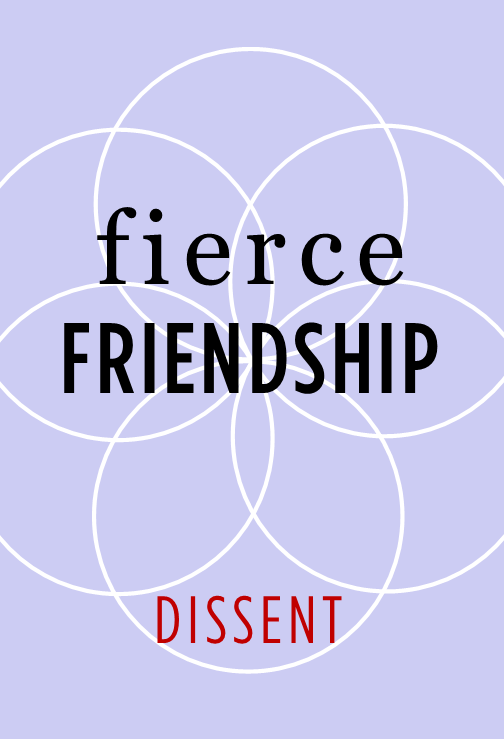
Dissent
“The plain fact of it is this: harmony can not happen if we are all singing the same note.“
From Inspiring Communities work in community-led change, we know that that innovation frequently happens on the edge. Some of the best solutions are created when people sit in relationship and discomfort long enough to really understand each other, and in doing so, uncover new pathways forward.
In CLD, conflict is actually part of good process, not something to be avoided. It’s just what happens when you bring diverse voices, sectors and parts of a community together.
In this chapter vivian reminds us about the need to welcome, hold and work with everyone’s voice – especially those of local citizens. Doing this effectively requires a commitment to host and work through courageous conversations where we all listen and learn to hold multiple truths – the binary of right and wrong does us no favours.
Megan Courtney, IC

Commitment
“THE COMMITMENT CONVERSATION is about the promises you are making to yourself, and to your community.“
In my experience, relational accountability is far more powerful than anything written in a contract. It’s about doing the things we say we’ll do, not wanting to let others down. It’s these trust based relationships that also hold us when our work in community gets tough. We need people around us to tell it like it is, to keep us honest, so that collectively we can speak truth to power and challenge the policy, process and system injustices that often keep the status quo in place. And we need to keep others honest too – words without visible action to follow, is rhetoric at its best.
Megan Courtney, IC
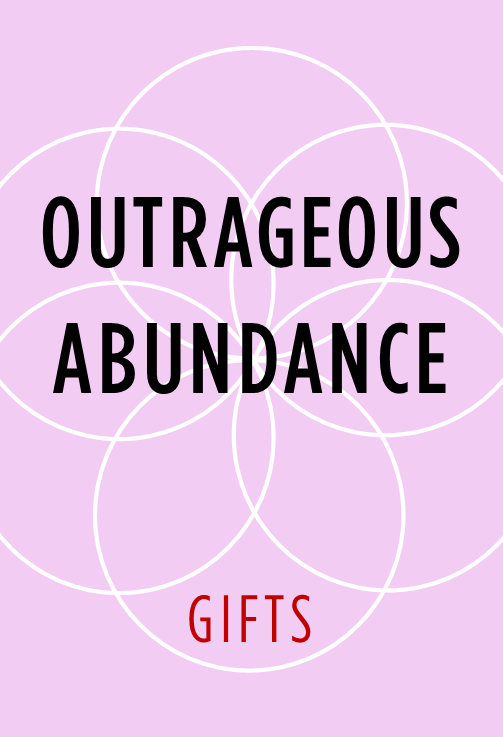
Gifts
“The plain fact of it is this: harmony can not happen if we are all singing the same note.“
These gifts conversation resources stretched my thinking about koha – as a tangible form of reciprocity, trust, whakapapa, connection, relationship – so much more than money. This challenges us to think expansively about what we are each giving and receiving in our community relationships – to grow a shared kete of knowledge, skills, experience, time and resources, yet including money too. CLD calls for deepest respect for the giving and receiving of everyone’s gifts, and in turn activates dignity, mana, wellbeing when we see what together we can make possible.
Margy-Jean Malcolm, IC
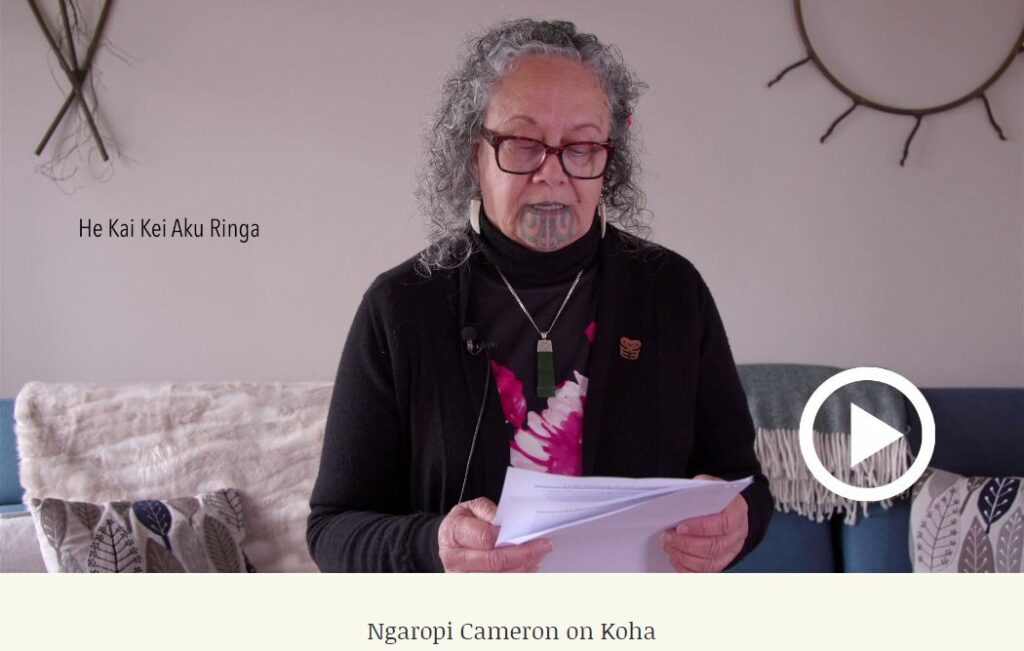
Ngaropi Cameron on Koha
Ngaropi Cameron, Director, Tū Tama Wāhine o Taranaki
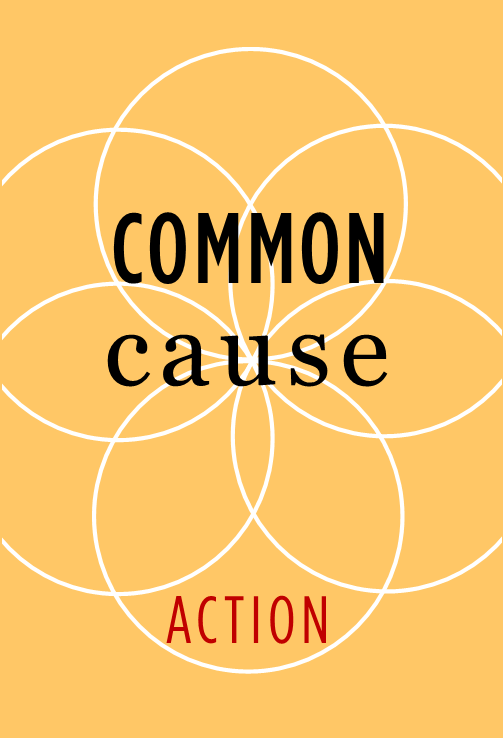
Action
“The smallest unit of wellbeing for human beings is not found in ourselves as individuals, or even as extended families…..but as communities.“
The CLD Theory of Change that has evolved in Aotearoa is based on the premise that all communities have the potential to thrive. The starting point for change is conversations between people, finding out about what you care about that’s in common and then taking that first next step of doing something small together. From small seeds, bigger things grow.
In this final chapter, vivian reflects on the essential elements for action – starting from where you are, working with what you’ve got and working in ways that are generative and generous. Community is what happens when all our contributions and actions come together, it’s always in movement and needs to be nurtured – not taken for granted.
Megan Courtney, IC
Fostering Active Citizenship — Learning from Taranaki
The individual awakening of citizenship is a critical element in how our communities
develop – because this awakening involves figuring out just what part of making
things better has got your name on it.
vivian Hutchinson 2012
Active Citizenship is term we’re hearing more about and it’s a key foundation of effective community-led development. How Communities Awaken – Tū Tangata Whenua is an award winning four-month Masterclass for active citizenship first established in Taranaki in 2011 now operating as a partnership between Community Taranaki and Tū Tama Wahine o Taranaki. Around 350 people have now participated in the Masterclass process, which has evolved a learning approach based on tikanga Māori, wānanga and community-led adult education practices. As a result, a diverse range of community members have now embraced their citizenship, developed a shared language, and formed strong networks across their community.
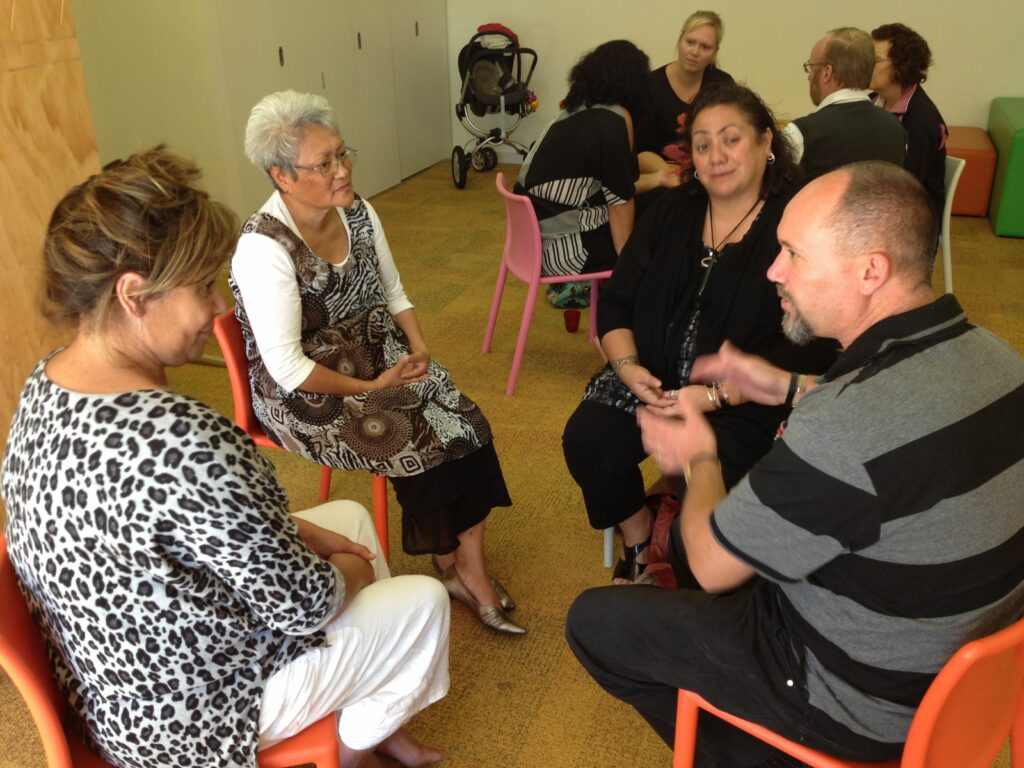
Masterclass participants deep in conversation.
Photo credit: Tū Tama Wahine o Taranaki
But what is Active Citizenship? For Masterclass co-founder, vivian Hutchinson, it’s “about finding purpose, place, relationships, and personal meaning through asking big questions and engaging in deep conversation with others.”
The Taranaki Active Citizenship Masterclass process has come about through skilful curation and longstanding, trusting relationships between vivian and the whanau behind Tū Tama Wahine o Taranaki. Awhina Cameron, CEO of Tū Tama Wahine o Taranaki, highlights the significance of friendship as the foundation for the collaboration. “Like any small community you can have MOU’s and service level agreements, but the reality of how it works is through friendship and whakapapa. Our work with vivian is an example of this. He was mentored by some of our late, great aunties.”
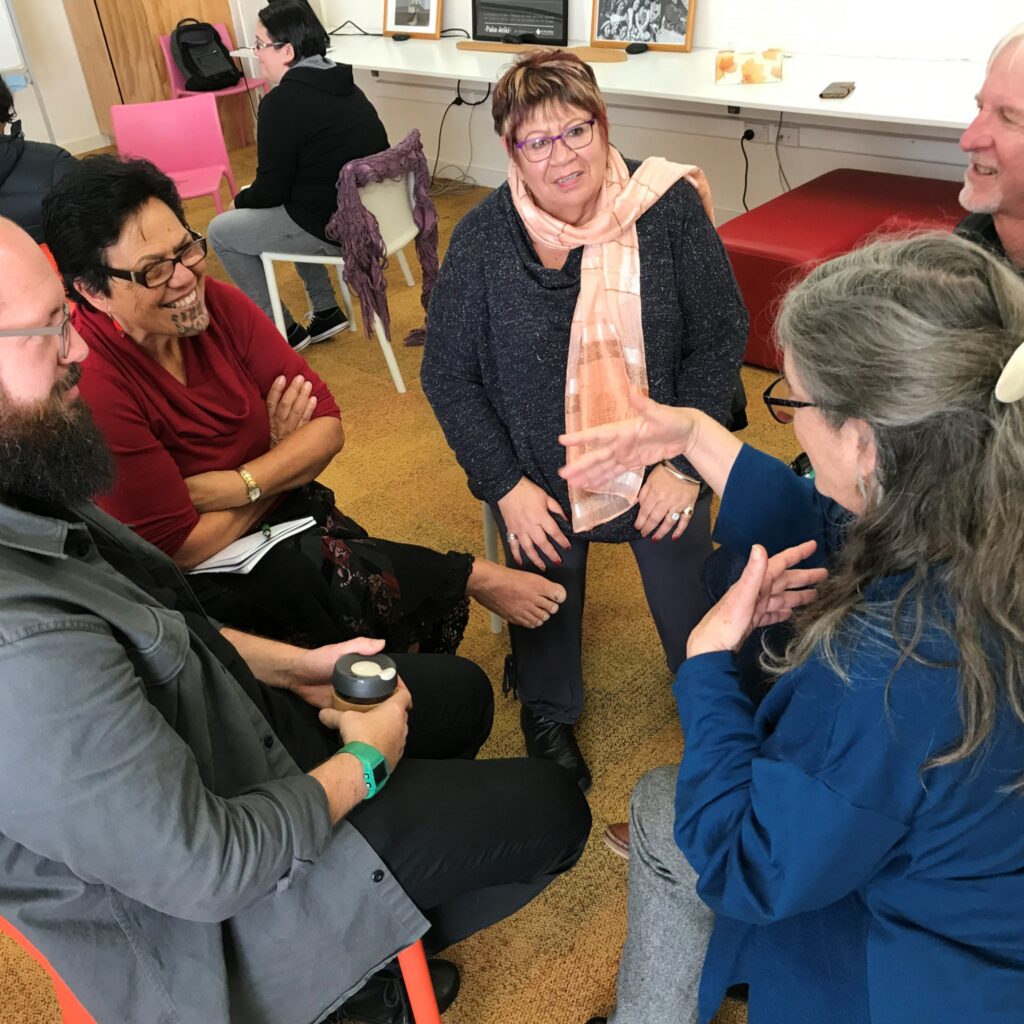
“The Masterclass really made me stop and re-analyse all my work, particularly the place of social services versus real community engagement.”
“I will now approach my group work much slower. I won’t rush in and fix the problem, instead I will try to think outside the square and use a more inclusive approach.”
Feedback from Masterclass Participants
Photo credit: Tū Tama Wahine o Taranaki
Masterclass fundamentals
The concept of invitation and intentional participation is core to the Masterclass approach. vivian notes “the personal invitation to participate helps to curate a diverse network.” People come and choose to become part of the process due to this invitation. Unlike many traditional learning opportunities, individuals are invited to attend as themselves, not as a representative of an organisation or other entity. Awhina adds that this invitation crosses boundaries between work and citizenship – and for many it is an awakening of new ways of thinking.
The Masterclass is a process of conversations. Participants are encouraged to listen and delve deep, listening to stories, considering key questions, and sharing in large and small group circle-based conversations.
Every class is different. I expect to learn as much as I have to share.
vivian Hutchinson
The Masterclass topics of Invitation, Possibility, Ownership, Dissent, Commitment, and Gifts were first offered by the US author Peter Block in his book “Community – the Structure of Belonging” (2008). To this, the Taranaki team added conversations on Community, Citizenship and Action. Workshops on these concepts are held fortnightly, with participants gifted books and a wide range of other readings and resources to explore between. During each workshop, participants lead workshop content by sharing their own history and stories as an introduction to the conversation. Local elders and thought leaders are invited into the conversations to ‘stretch’ them by sharing their perspectives. In terms of Mātauranga Māori, these ‘stretches’ have included insights into Tū Tangata Whenua, Tikanga, Rangatiratanga, Whanaungatanga, Māramatanga, Ōhākī and Koha. (These links will lead you to Te Aka – Māori Dictionary meanings for these words.)
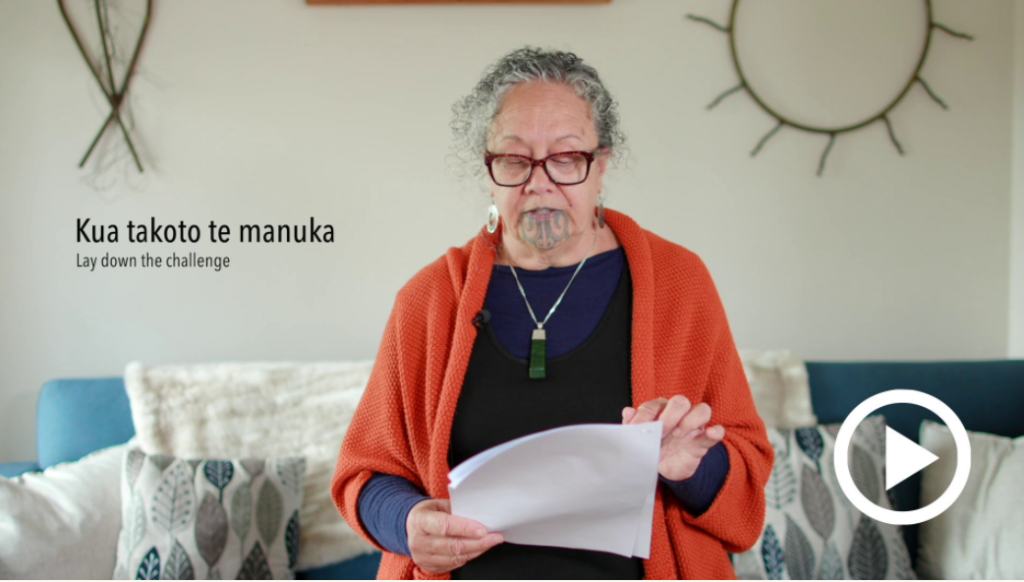
Ngaropi Raumati, Kuia and Director of Tū Tama Wahine o Taranaki has created Te Kai a Te Rangatira (2020) This video series is based on her stretch conversations on the topics above.
For many, it’s a challenging process. It invites a slowing down, actively listening and committing to a journey. Awhina notes that the Masterclass is not therapeutic, nor is it mentoring. It allows time and space for people to do some deep thinking about self and place in community, alongside and in conversation with others.
The Masterclass has made me ‘feel more like myself’ than I have for a long time.
Participant feedback
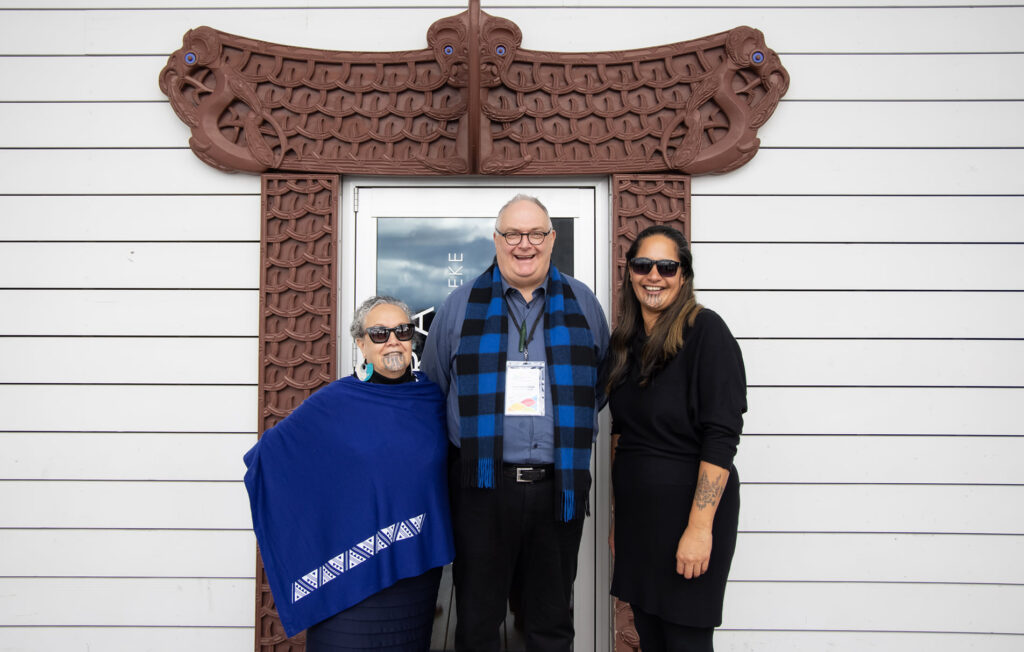
Ngaropi Raumati (Tū Tama Wahine o Taranaki), vivian Hutchinson (Community Taranaki) and Charissa Waerea (ACE Aotearoa) — pictured outside Te Raukura, Te Wharewaka o Pōneke, ACE National conference June 2021.
Photo credit: ACE Aotearoa
The Masterclass leads are careful not to claim praise for outcomes that have emerged for individuals who have been part of the Masterclass journey. They remain humble, and acknowledge that changes, activations, projects, and personal development belong to the participants, not them as individuals, or their organisations. Despite this, both feel a strong sense of positive community development in Taranaki because of the Masterclass process. Their success also formally recognised thorough the awarding of the 2020 ACE Aotearoa Annual Award for Community Programme of the year – Tangata Whenua.
An evolving bicultural approach
The Masterclass process, content and format has continued to evolve. A couple of years after the first conversations, Tū Tama Wahine o Taranaki wanted to become involved, but to do it their way required a bicultural approach vivian says. “This was easily done due to some long-standing relationships, over several generations. The trust was already there for creative collaboration.”
Awhina speaks of the advancement of Māori and indigenous ideas of community development and active citizenship that has happened through conversations over time. For an organisation like Tū Tama Wahine o Taranaki, it’s about walking in both worlds and having to translate concepts with a te ao Māori perspective. “This information wasn’t available at the beginning, it is content that we have had to think through, explore readings, look at other indigenous communities and land upon our own thinking”.
What’s changed?
You can’t operate in a community without being part of the community.
Awhina Cameron
Both vivian and Awhina enthusiastically explain that for them, the Masterclass has been the most profound, effective, and directly beneficial ‘professional development’ programme they have witnessed. Finding and opening-up space for deep conversations and reflection has led many participants to new insights on citizenship, belonging, cultural competence, assets that are latent in their communities and their own individual purpose and contribution to community. And for those working as service providers, the Masterclass has grown understanding about the need for people to be themselves, have space to think and find their purpose – that their work needs to be about more than just services says Awhina. “Having kaimahi, community members, clients and others all involved together in the Active Citizenship process, and as active citizens, thereafter, is contributing to the overall health and success of the community.”
Participants finish the Masterclass with an action plan for their own roles and direction as active citizens in the community. This has led to participants progressing a range of initiatives that hold meaning for them, from kaumatua group activities to mirimiri /massage for babies, to a community garden project, community gymnasium, and kapu korero sessions, where community members come together to practice their every day reo.
Sharing what’s been learned
There is tremendous knowledge held within the group and people were extremely generous in sharing their wisdom.
Masterclass participant
With Covid bringing a halt to running the Masterclass in person, the team has put their minds to other ways of sharing their knowledge.
Tū Tama Wahine o Taranaki and Community Taranaki have developed a written guide about the Masterclass as a step towards sharing this knowledge with other communities. This extensive resource is available on their website and was supported by the Department of Internal Affairs. Awhina emphasises the importance of asking questions and engaging in conversation, and offers a way of approaching the guide – “Ask, where is the relevance of this thinking, particularly around Māori concepts?”
Alongside the Masterclass Guide, Ngaropi Raumati, Kuia and Director of Tū Tama Wahine o Taranaki has created Te Kai a Te Rangatira (2020) video series based on her stretch conversations held in the Masterclass.
vivian has brought together a collection of essays on topics at the heart of Active Citizenship and published these into a book, How Communities Awaken — Some Conversations for Active Citizens (2021). The essays are freely available on the Community Taranaki website.
vivian’s advice for other communities looking to begin something similar is to make time and space to read and absorb the material. Like Awhina, he views the Taranaki Masterclass resources as a place to begin conversations and evolve from there. A useful start to creating your own Masterclass can be found in his paper, Some Elements of Design.
Get your thinking about Active Citizenship started!
Read the guide to the Taranaki Active Citizenship Masterclass
Watch Tū Tama Wahine o Taranaki’s “stretch” videos by Ngaropi Raumati which look at Active Citizenship from a Te Ao Māori lens
Read How Communities Awaken essays by vivian Hutchinson
In 2022, Inspiring Communities will share vivian’s essays on our social media. We are keen to open a wider national conversation about active citizenship, and ways to grow more of it across our communities. Please join us for this conversation!
In 2022, Inspiring Communities will share vivian’s essays on our social media. We are keen to open a wider national conversation about active citizenship, and ways to grow more of it across our communities. Please join us for this conversation! Like and follow our Facebook and LinkedIn pages and make sure you’re on our newsletter mailing list.
Inspiring Communities would like to thank Awhina Cameron and vivian Hutchinson for generosity of their time spent speaking with us for this story.
From small places come big things – The story of the Rakiura Museum
Rakiura (Stewart Island), is a beautiful, remote and virtually untouched part of Aotearoa. Surrounded by native bush, windswept beaches, rugged coastlines and rare wildlife, the place holds a strong attraction for both locals and visitors alike.
With only 400 permanent residents, the people of Rakiura often have to look inwards to get things done – and they do. Rakiura has a strong history of its community pulling together to make things happen. The development and building of the new Rakiura heritage centre which opened in December 2020 was no exception according to Rakiura Museum – Te Puka o te Waka building committee chairwoman Margaret Hopkins.
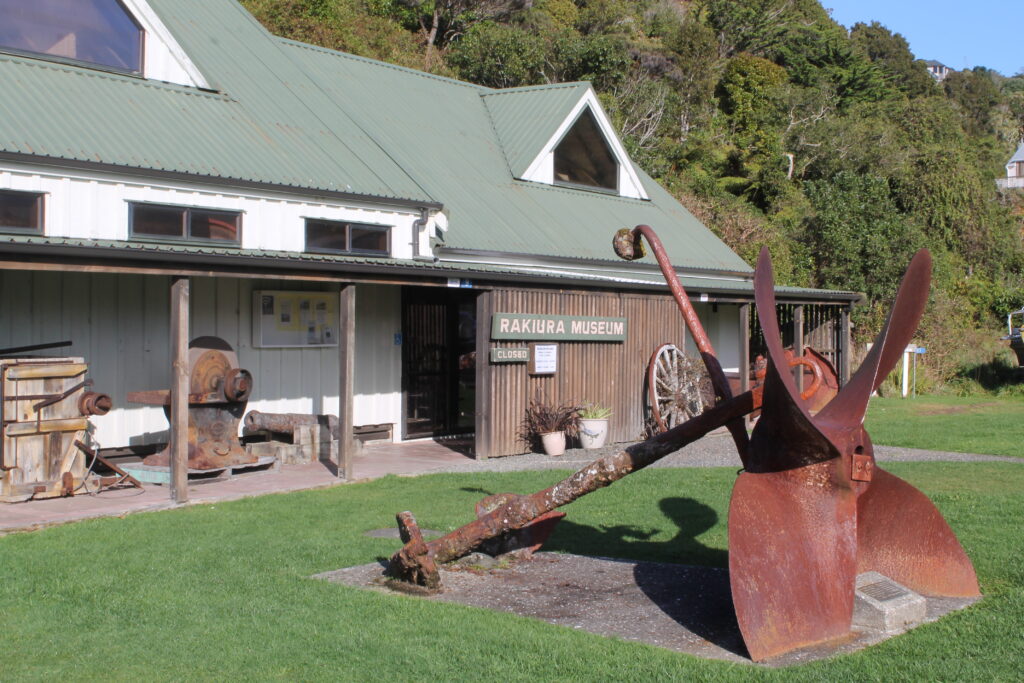
The Rakiura Museum had existed on the island since the 1960s. Home to a large collection of important items, it had undergone an extension in the 90s before it was decided that a brand-new building would be needed to house their expanding collection. A Trust was set up to manage this new build, bringing in people who were already trustees of the existing museum, council members, community board members and the Stewart Island Promotions Association.
The original Rakiura Museum.
Funding was their first challenge. Some of the members of the Trust had become adept at writing funding applications during the build of Rakiura Community Centre, a hugely successful community-led project in the 90s, and so were able to navigate the application process for the heritage centre. However, realising that the funds required would be much larger than that of the Community Centre, this time a project funding manager was engaged.
“You can only do so much and at times one or two of us were doing everything – It was exhausting in the early stages”
Trustees also approached anyone with a connection or link to Rakiura and discovered just how important this new museum was to people who had ancestry on the island. They received a lot of support and were surprised with the donations from people who only had tenuous connections to the island. When a final grant from the Ministry for Culture and Heritage was provided for $1.1 million, the Trust could finally put a spade into the ground and begin.
Building began in October 2019. An architecture firm and building company from the mainland were hired to create the structure; a triangular-shaped building that was reminiscent of a ship which was in keeping with the collection and the history of the island.
“It was very hands-on! The Trust was even baking for the builders, making sure they were kept happy through all the terrible South Island weather!”
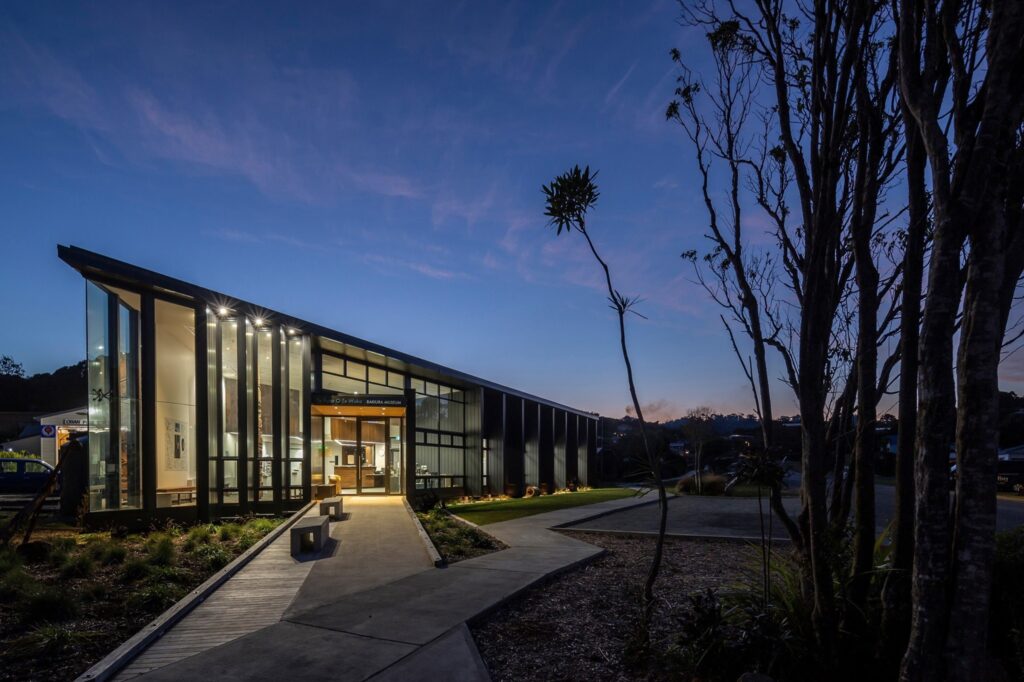
A year on from when they first broke ground, the Rakiura heritage centre was finished on time and on budget.
The new Rakiura Museum
Drawing on Experience
Having worked on the Community Centre, Margaret was able to bring learnings from that project into the Rakiura heritage centre. At the top of this list was the importance of having a vision and knowing that with hard work, commitment and persistence – anything is possible.
As there often is with many large community projects, the Heritage Trust encountered their share of naysayers. A few permanent residents did not see the need for what they only saw as a tourist attraction and felt that the build was a waste of time and money. Rather than stop the project however, these negative comments made the Trust more determined to make it happen.
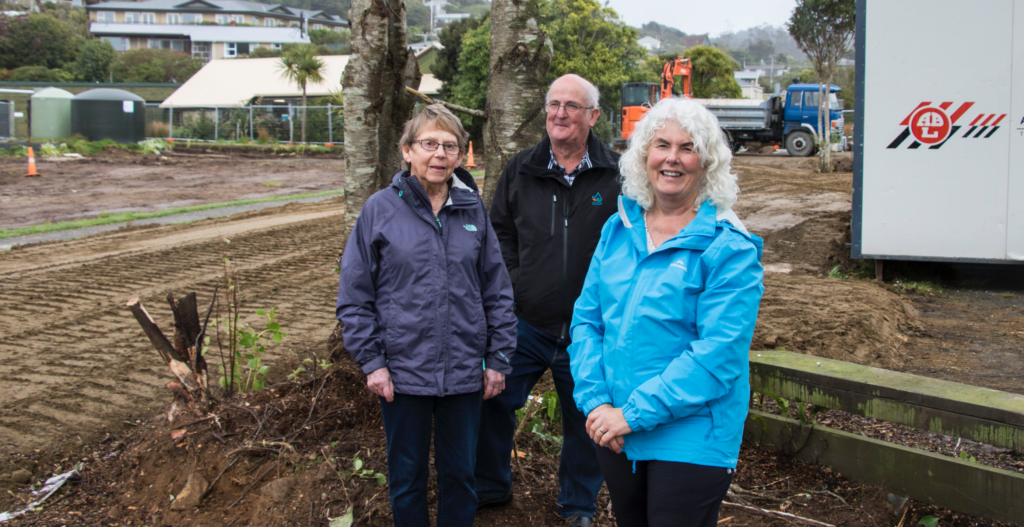
“To us, it felt justified, we know how important our history is for not only Southern New Zealand but for the whole country”
Trustees Anita Geeson, Bruce Ford & Margaret Hopkins at new museum site.
Having a good team with multiple skills and connections was also crucial. The important process of tendering for architects and building companies was done with care, ensuring that the professionals they engaged with understood how important the building would be when it came to representing the community and the history of the island.
Telling the Right Stories
Setting up the exhibition itself was a big step in getting the centre open and one that held many lessons for the Trust. This was one area where Margaret saw an increase in community members who were enthusiastic about getting involved. This provided an opportunity for many locals to see, touch and learn about the items that made up the fabric of their history.
“It gave locals a sense of ownership, especially when they could see their own stories being told.’
It was essential to the Trust that the right voices were heard when it came to telling the history of Māori settlement and habitation on Rakiura. For this, a local iwi committee was set up and engaged with to ensure that the items and stories they had on display correctly told this part of the Island’s history.
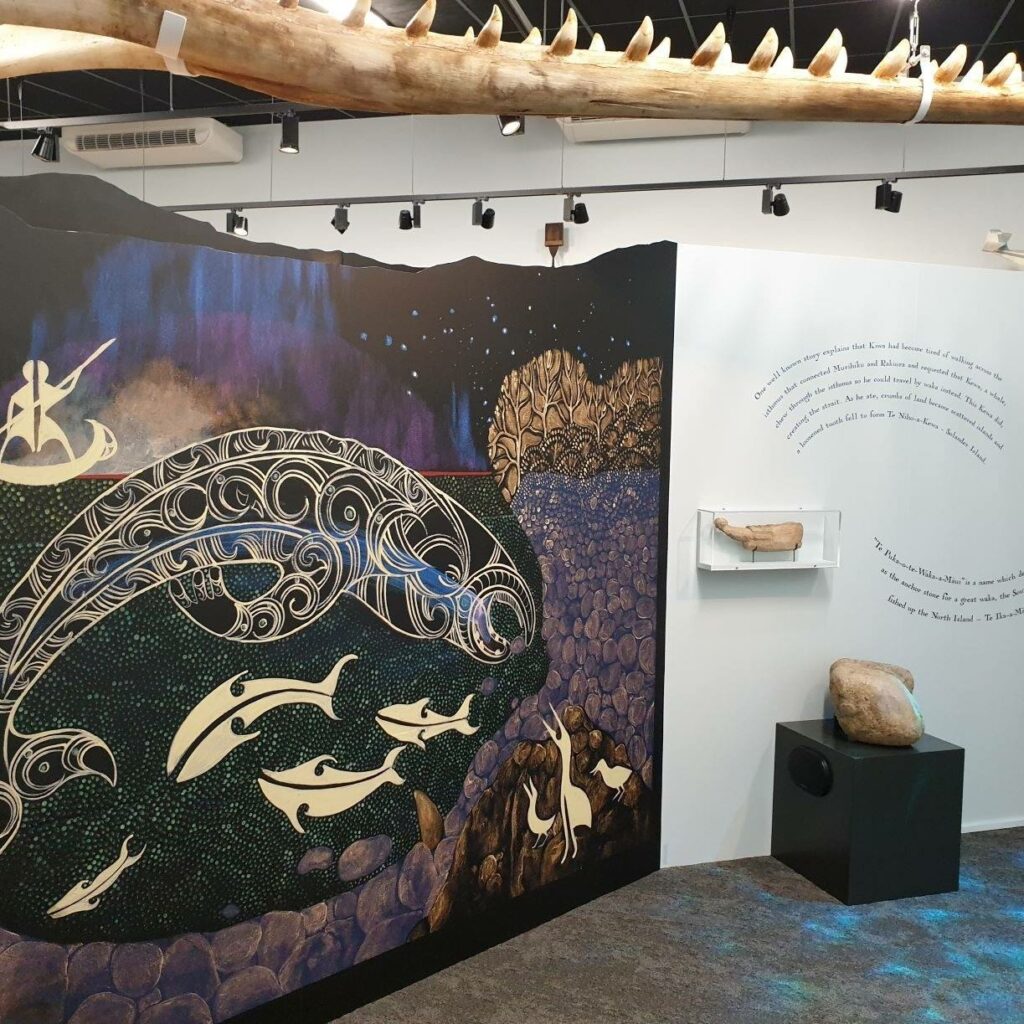
Margaret believes the exhibition is now more balanced because they have the correct stories, are able to focus on what brought people to Rakiura in the first place, and can celebrate the early communities who made Rakiura home.
Exhibition at the new Rakiura Museum.
The Importance of Mana
Despite the Island having a long history of Māori settlement, the culture and stories of local iwi were generally not well known or embraced. However, when the new Rakiura Museum finally opened with a pōwhiri, Gwen Neave who serves on the Toi Rakiura Arts Trust committee which commissioned and supported the Oral History project featured in the Museum, noted that it was a beautiful bridging moment for the community.
The pōwhiri was performed by a group, of which Gwen was a part of, that also included the local school and its students. While it was challenging to bring together and involved weeks of practice, Gwen saw the pōwhiri it as an opportunity to introduce this key cultural element at the perfect time.
‘It brought mana and gravitas to the occasion. It was moving for many there and well-received by those who witnessed it.’
A resident of Rakiura for 55 years, Gwen says the pōwhiri has had far-reaching effects on the island. Te Reo is now being taught to a class where they learn tikanga as well as the history of the island and about the mana whenua who live there. It is also being embraced in places like the local Four Square and in the school where Te Reo and English are used interchangeably.
There is a new dynamic to the community now, one that is more actively embracing biculturalism, the language and the deeper stories of this place. Gwen also notes that she’s loving seeing the way New Zealanders more broadly are coming of age with Te Reo and is so proud of the way that this small community at the bottom of the south is embracing this too.
Community Development is not always a linear path
As it is with any large-scale community project, challenges are always present. Whether it is the practical logistics of building in a remote location or negative comments from some quarters, there will undoubtedly be obstacles to overcome. Creating things for and in the community can at times be messy – it’s never a linear path.
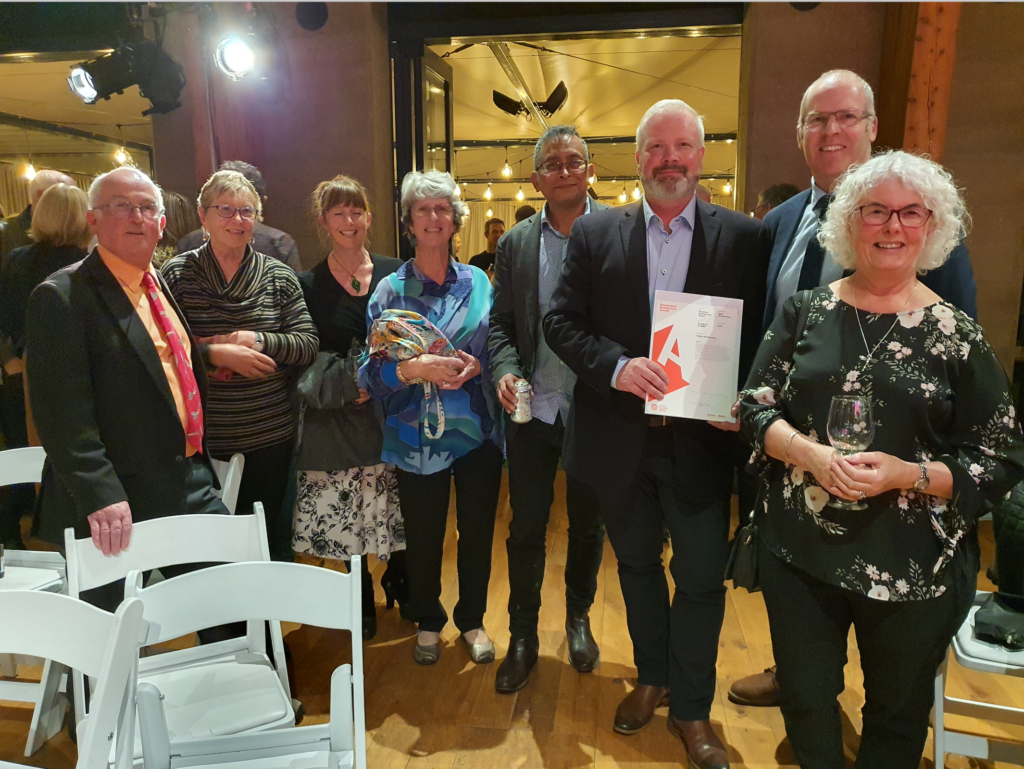
Having not yet been open for a year, the heritage centre has already seen 14,000 visitors through the door. The centre has seen 25 school groups visit as well as strong support from both local and national visitors. To the community it is not only a source of pride and achievement but also a great drawcard to the Island, helping to bolster tourist numbers and support the economy of Rakiura.
Bruce Ford, Raylene Waddell, Jo Learmonth, Elaine Hamilton, Raja Hidzir, Julian O’Sullivan, Ian Sutherland, Margaret Hopkins
Margaret is also excited by the next generation of strong community-led leadership that’s emerging on Rakiura via Future Rakiura – a group formed in 2019 to encourage and build collaborative leadership skills amongst young people. As a mentor for this group herself, Margaret has seen them pull together and lead Waitangi Day celebrations, community get-togethers, and fundraisers for small community projects. Gwen also is a mentor for Future Rakira. Connections help to bind the community together, allowing them to create a unified focus when it comes to getting things done for the people who live there.
“When you come out the other end of a project like this, you realise that no matter where you live, or what resources you have at hand, if you have the vision and the drive to get it done – anything is possible”
I Love Avondale – A story of community spirit
Despite that diversity and a steadily rising population, Avondale experiences some of the highest levels of social deprivation in the Auckland region. This can mean a disconnect within the community, a lack of identity and low interaction amongst its residents.
Dayne Smith has lived in Avondale most of his life and saw an opportunity to put his experience studying and working with the media to use, by celebrating and showing his neighbourhood in a positive light.
I Love Avondale was launched in 2014 – a Facebook and Instagram page used to encourage local pride and community building. Within a short amount of time, it established a strong and engaged virtual community, using the platform to celebrate Avondale, its stories and its people.
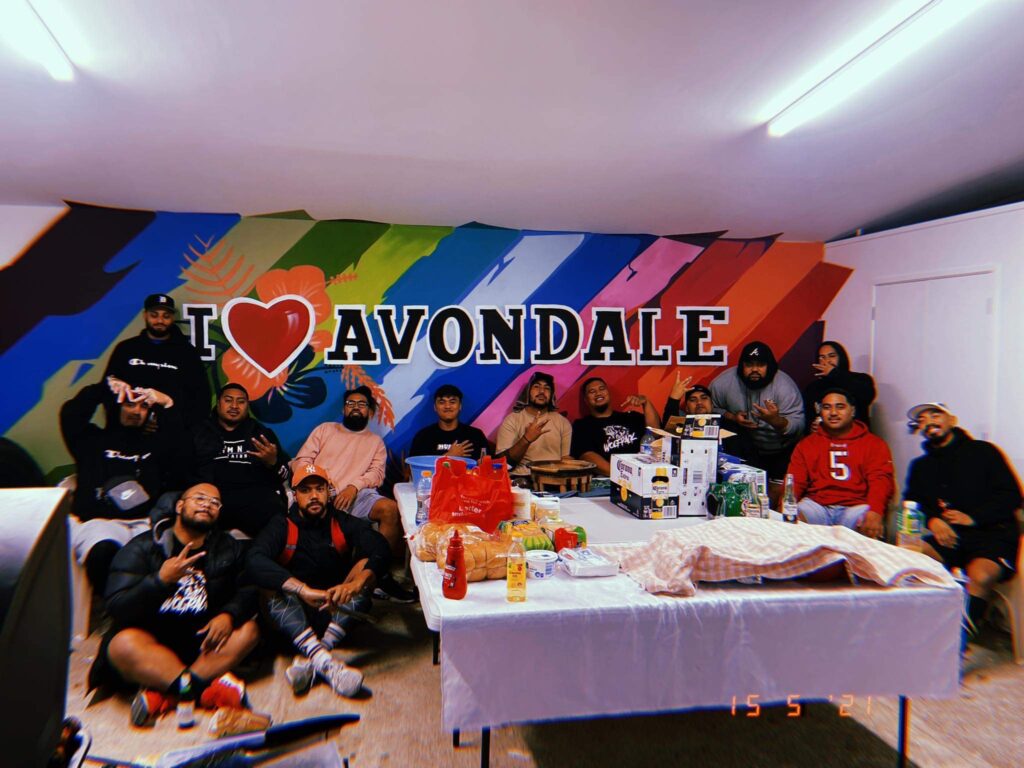
Their community outcomes are now delivered via four interwoven strands of mahi: Kai Avondale community food projects, Eastdale Hub for recreation and youth activities, Storytelling online and on the ground, and Whanaungatanga – connecting, collaborating and advocating with and for others.
Dayne describes it simply as a community development project, but to him and the people it serves, it’s so much more than that. What had started out as a social media page, quickly grew into a wider grassroots community-led project and in 2017, Avondale Community Action brought Dayne onboard as one of two community activators, involved specifically with connections and communication on the ground. Today, I Love Avondale has around 10,000 followers online and over the years, hundreds of individuals, businesses and organisations have contributed to the mahi they do.
Through the I Love Avondale movement and now under the Kai Avondale banner, the community of Avondale have launched initiatives like ‘Feed the Streets’: a free community dinner where anyone is welcome; ‘Free Guys’, a social-style of supermarket where you “take what you need, pay what you can”; and a network of Breakfast Clubs across Avondale. These initiatives are as much about providing opportunities for people to socialise and share each other’s company, as they are helping improve access to food for those doing it tough and reducing still edible food going to landfill.
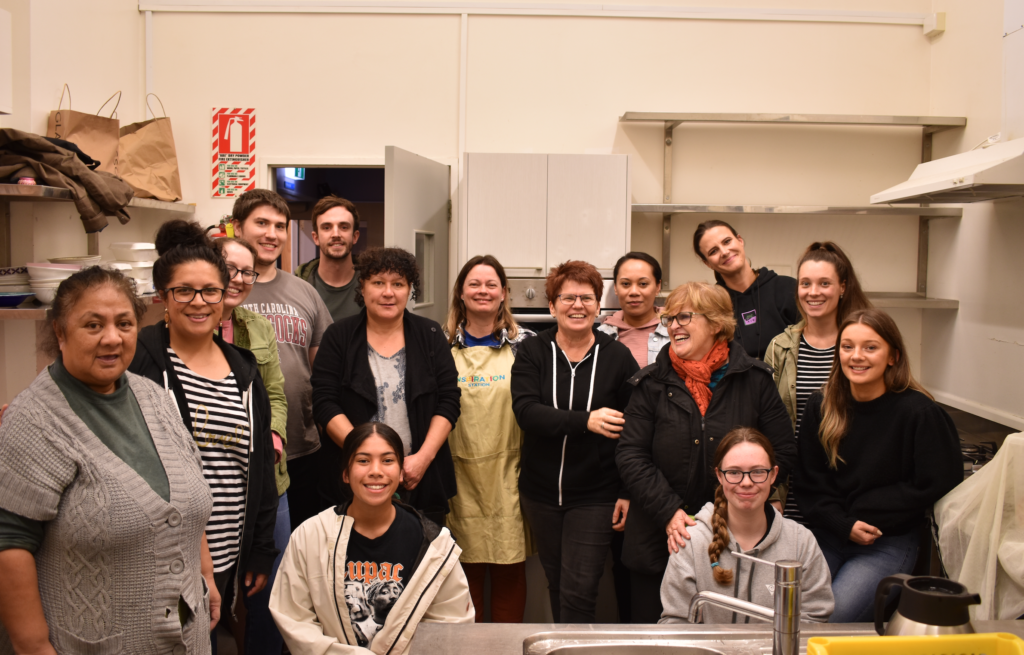
While this may seem like a lot, it barely scratches the surface of the mahi that goes on behind the scenes. Dayne and the team ensure that the connections that might not otherwise exist, are put in place.
Through a connection at Glenavon School, Dayne was able to connect Upside Youth Mentoring with a Ministry of Education-funded opportunity he developed alongside local Resource Teachers: Learning & Behaviour (RTLBs). As a result of Upside coming onboard, the Te Whau Hapori one-to-one mentoring programme was established and now exists in five Avondale area schools, helping 25 students in the first cohort reach their potential through mentorship.
“The Upside programme already existed, we just helped create a new opportunity working with a cluster of schools within a single community. When we identify opportunities, we try find someone who has the skills and knowledge to deliver it rather than reinvent the wheel.”
These connections also extend to the local government. The team helped form a collaboration between Panuku, the Auckland Council’s Development arm, and Crescendo, a music mentoring programme. When Crescendo needed a space to set up a new studio, Dayne approached Panuku, knowing they had empty buildings in Avondale and linked the two together. Now, thanks to this connection, a recording studio exists with a radio station, and even a podcast being produced from its new premises.
Inspired by the ‘Humans of New York’ project which began in 2010, Dayne started capturing the people of Avondale in the same way; by taking their photo and telling their story via #PeopleofAvondale.
This proved to be incredibly popular online and caught the attention of Panuku who managed a large chain link fence in the centre of town as part of the development. This fence had multiple A0 sized frames attached to it for advertising purposes but by working with I Love Avondale, they were turned into an outside gallery space, printing and framing images of the Avondale community. Now an ongoing project, Dayne coordinates the development of new content, curating new images every month. It’s vital that either the creator or the content is from the community.
“My intention is to celebrate the culture, the characters, the place that we live in and showcase it in various ways. There has to be a strong local flavour to it.”

The current images exhibited show children illustrated in the careers they aspire to have – a project that brought an illustrator will local connections and a school together and one that the community is particularly proud of.
For Dayne, each day within his community is an opportunity to learn about what they need. He stresses the importance of coming into the community, not to tell them what they should be doing but instead, listening, observing and learning from those around him.
“We have our arms around our community and we are doing it together.”
Based on their experiences over the last seven years, I Love Avondale offer up the following advice to those considering kicking off something similar in their community.
“Really think about what you want to achieve. Are you trying to do something with a community or to a community? If it’s the former – and it should be – you need to connect with locals and do it on their terms. Constantly listen and observe, and use what you learn to shape your responses. Let the feedback and energy from the community inform your decisions.”
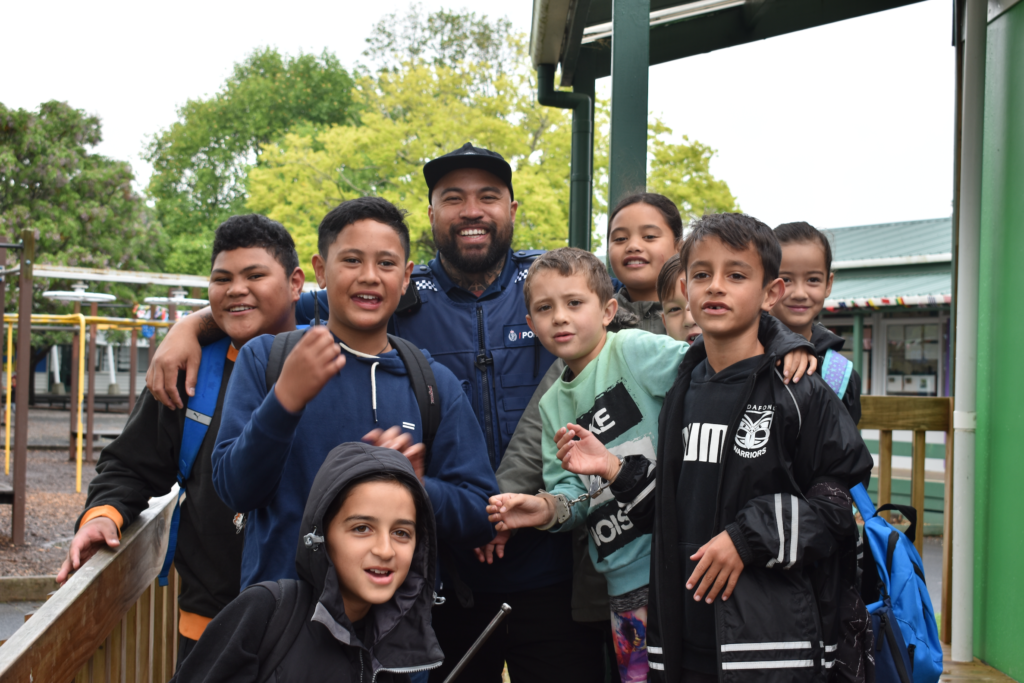
While I Love Avondale still maintains storytelling as an integral part of its existence, it has undoubtedly gone above and beyond its initial vision from 2014 – Collaboration, advocacy, connection and engagement continue to drive the community to ensure that I Love Avondale is not just a name of social media pages, but the collective feeling of the community.
